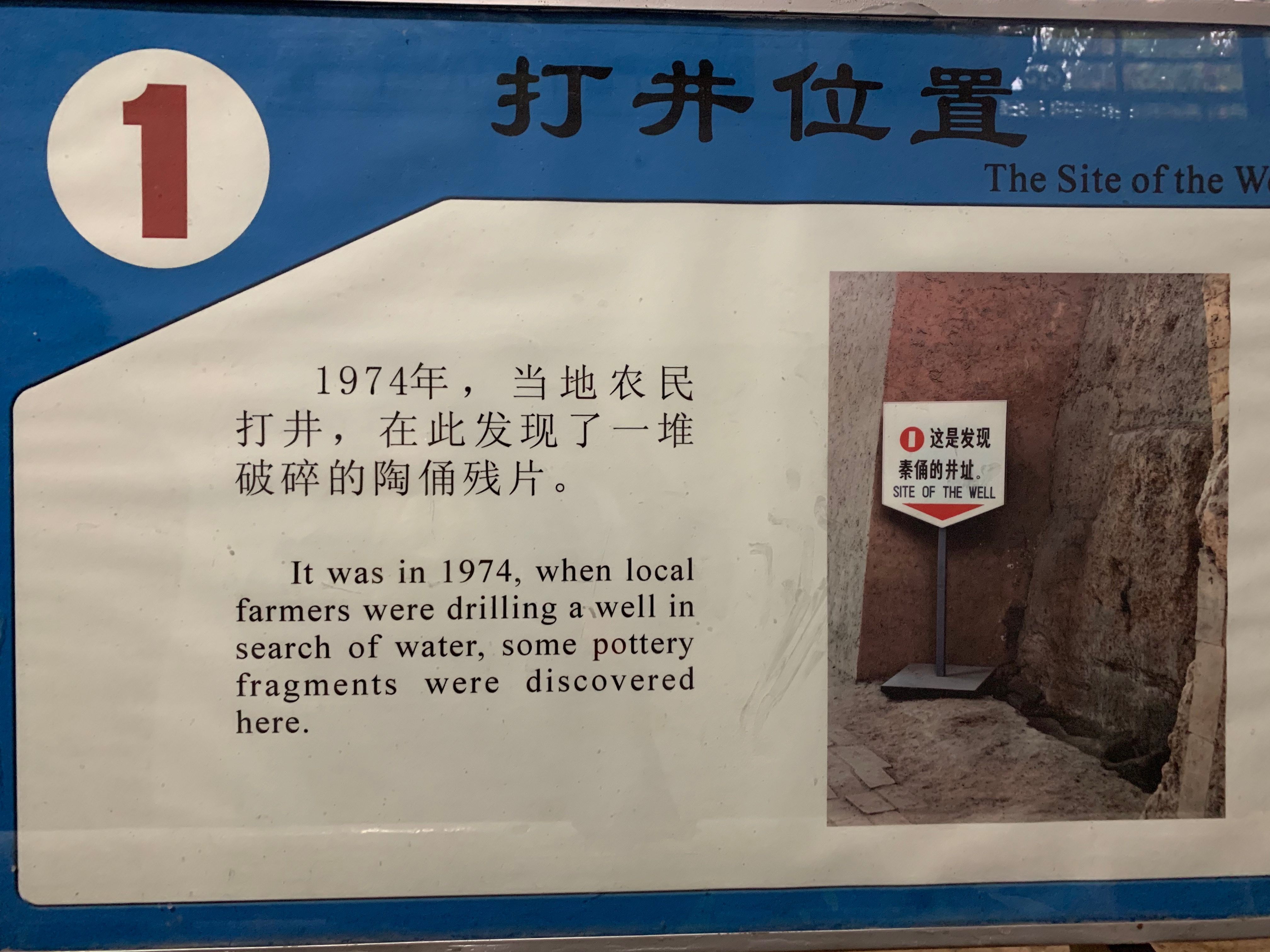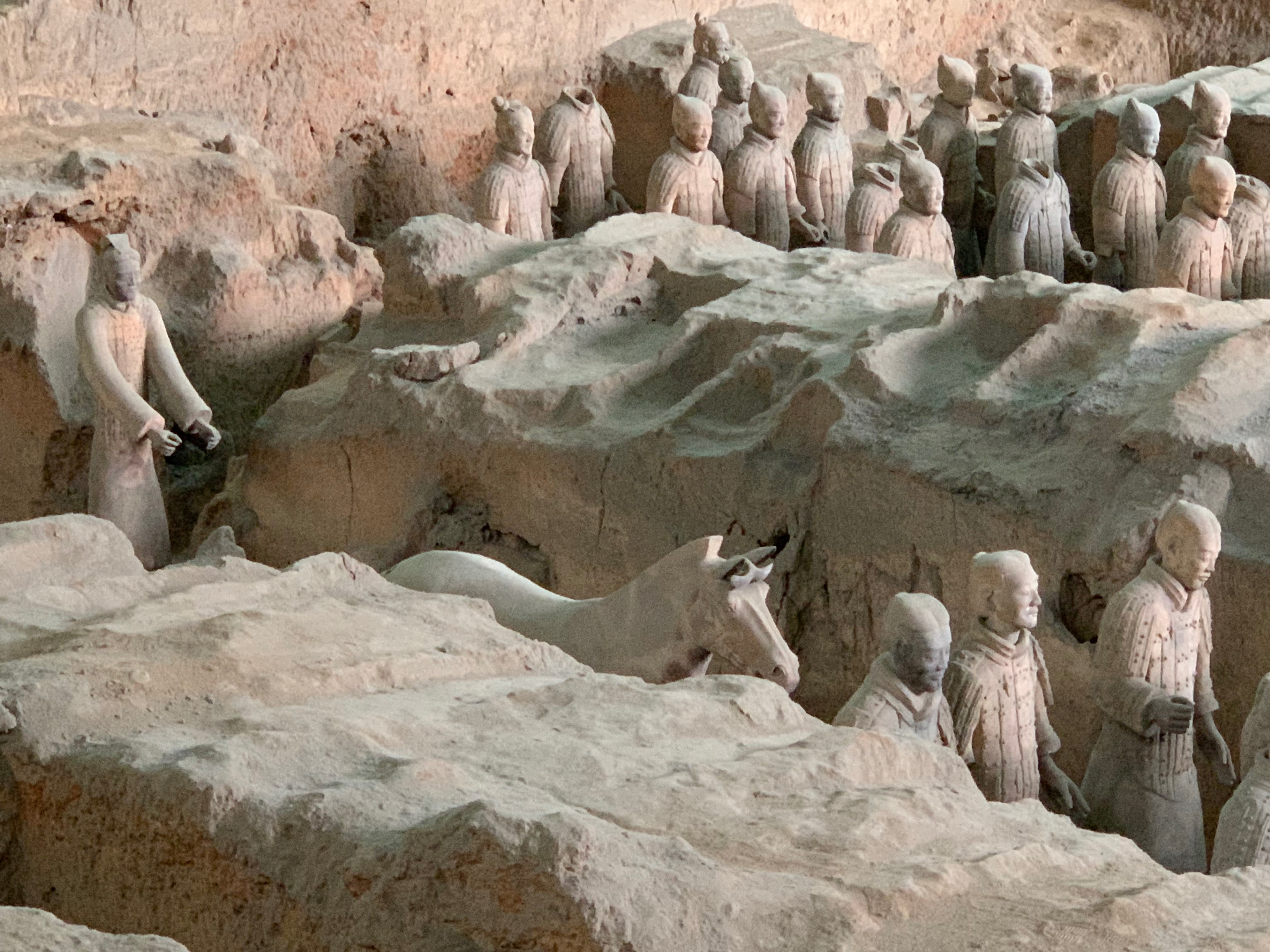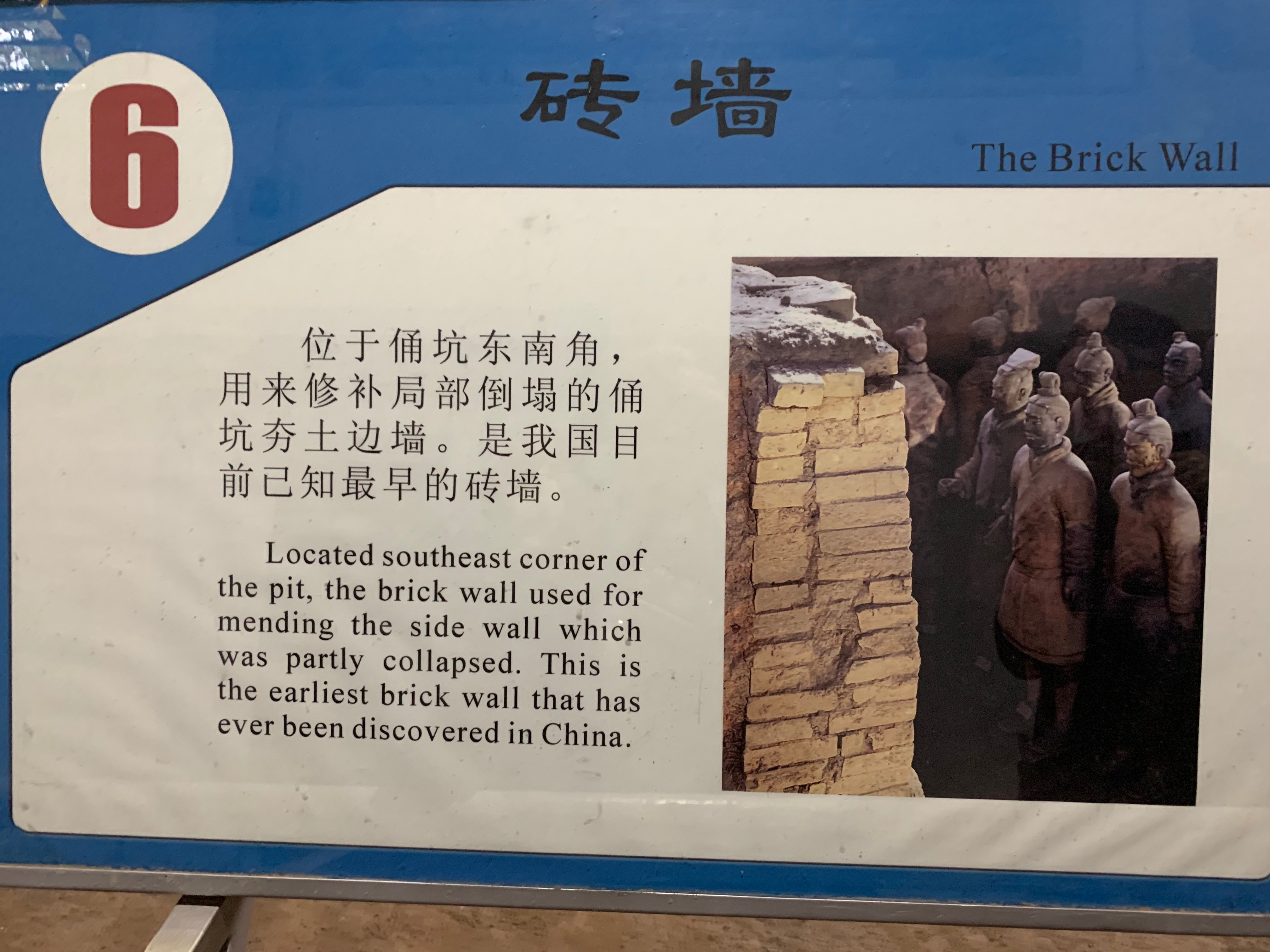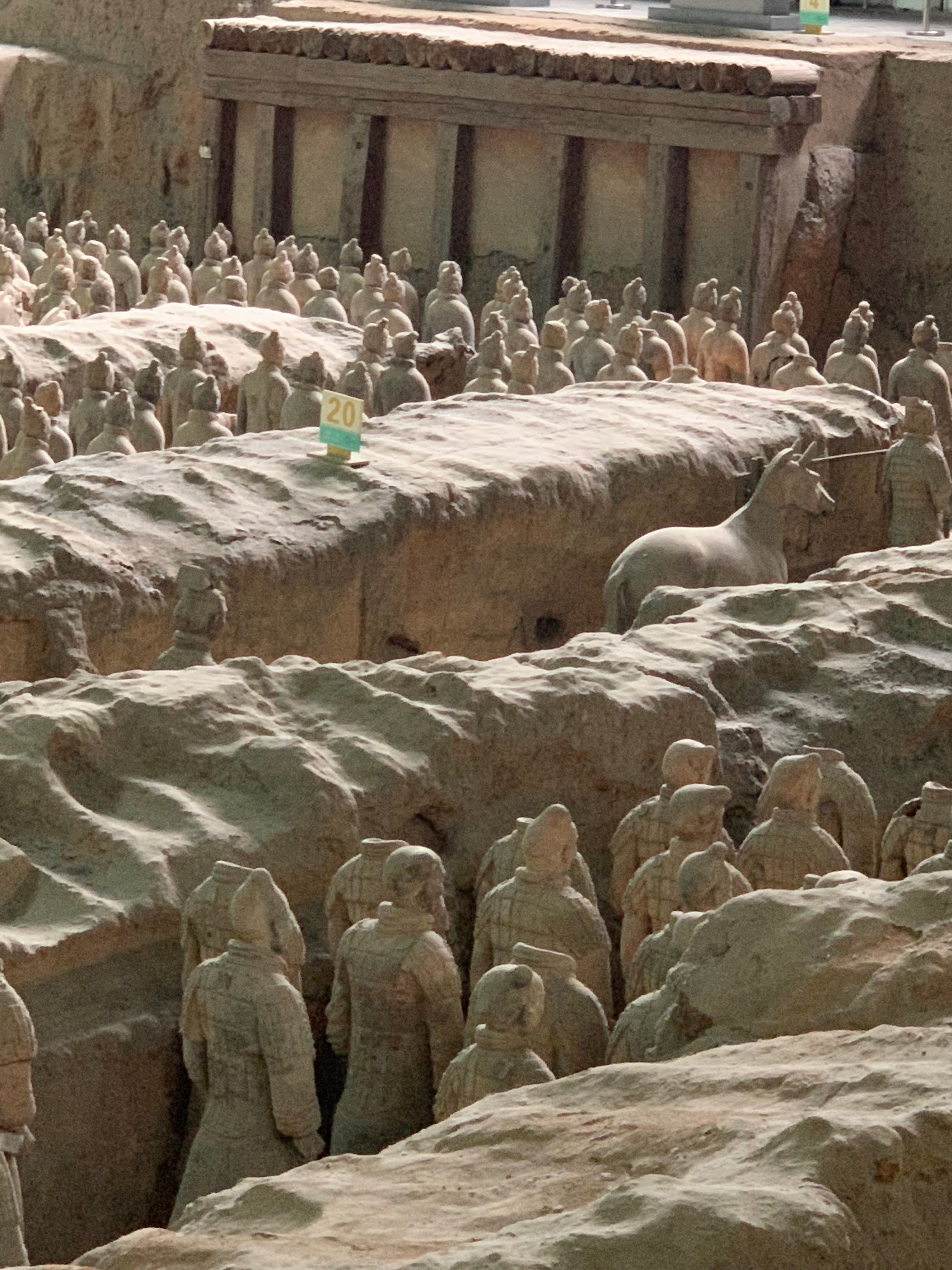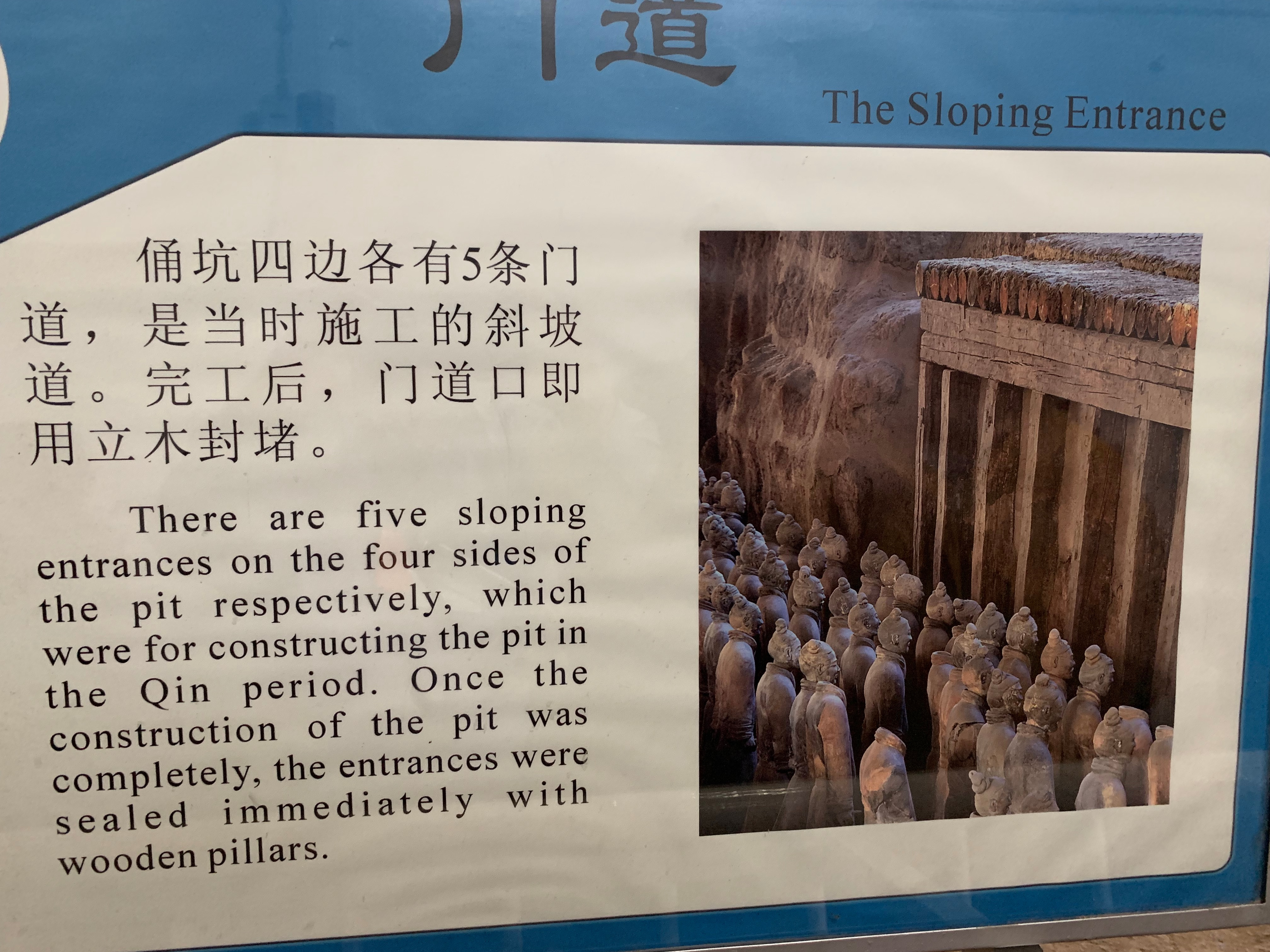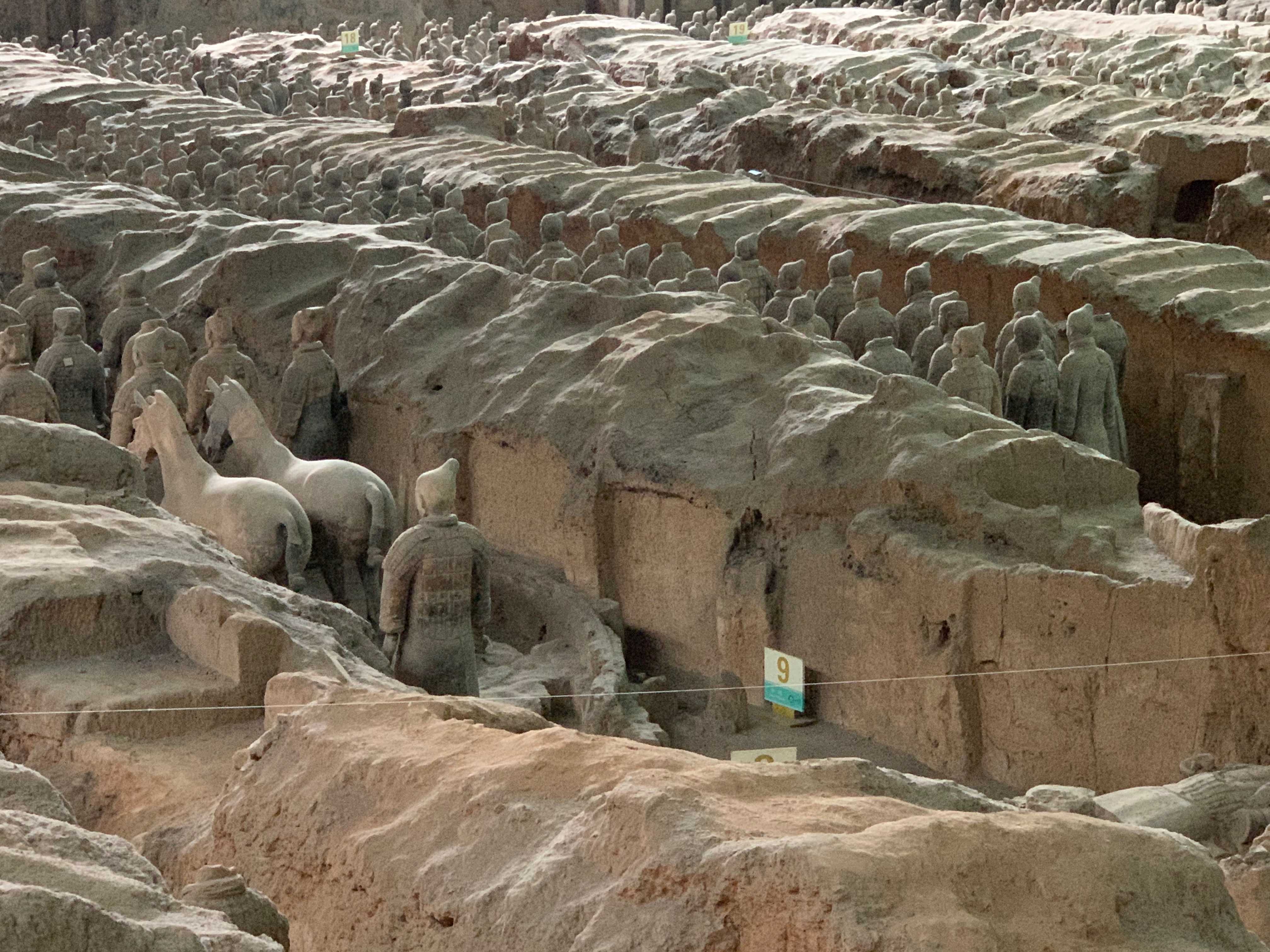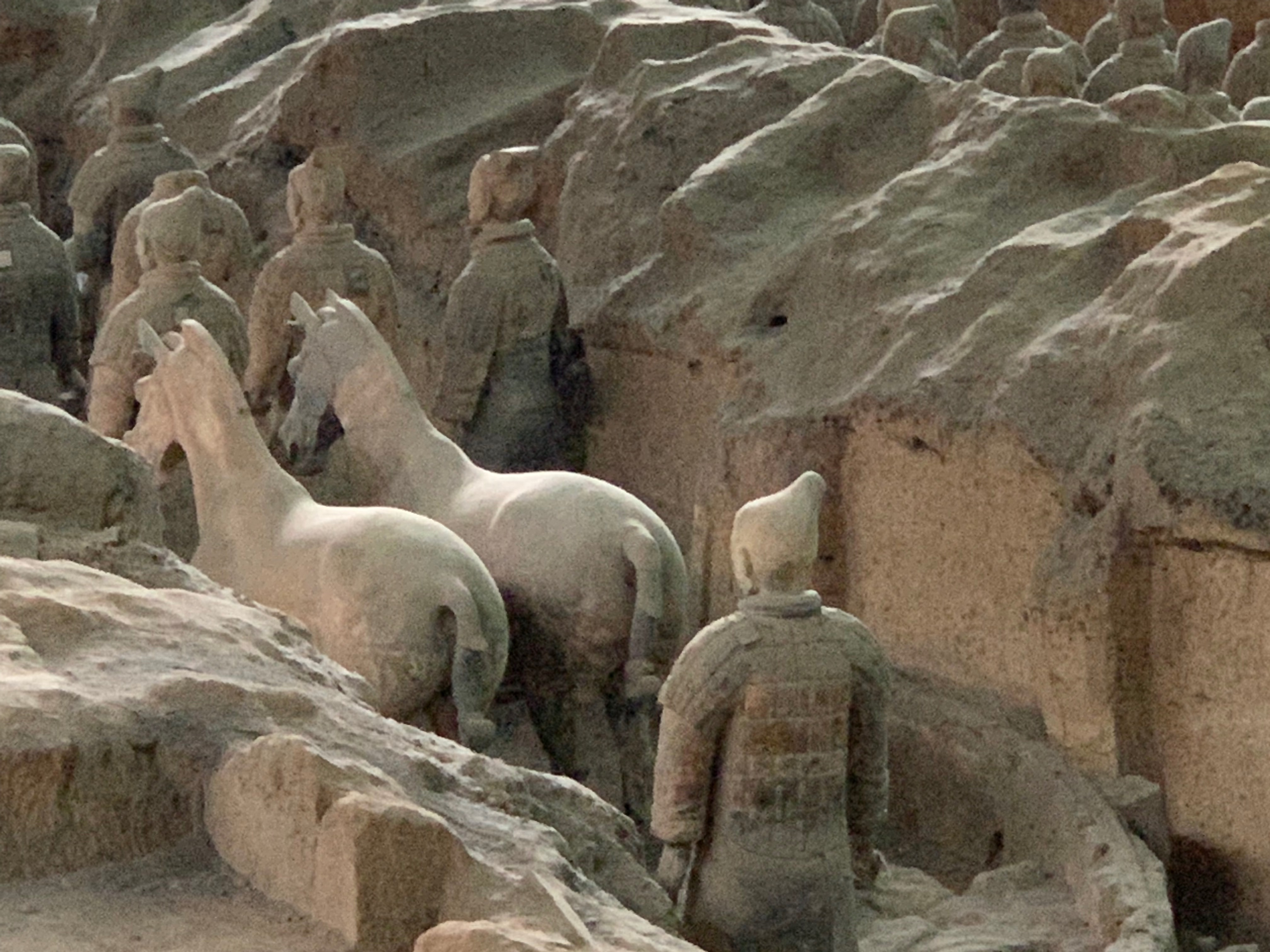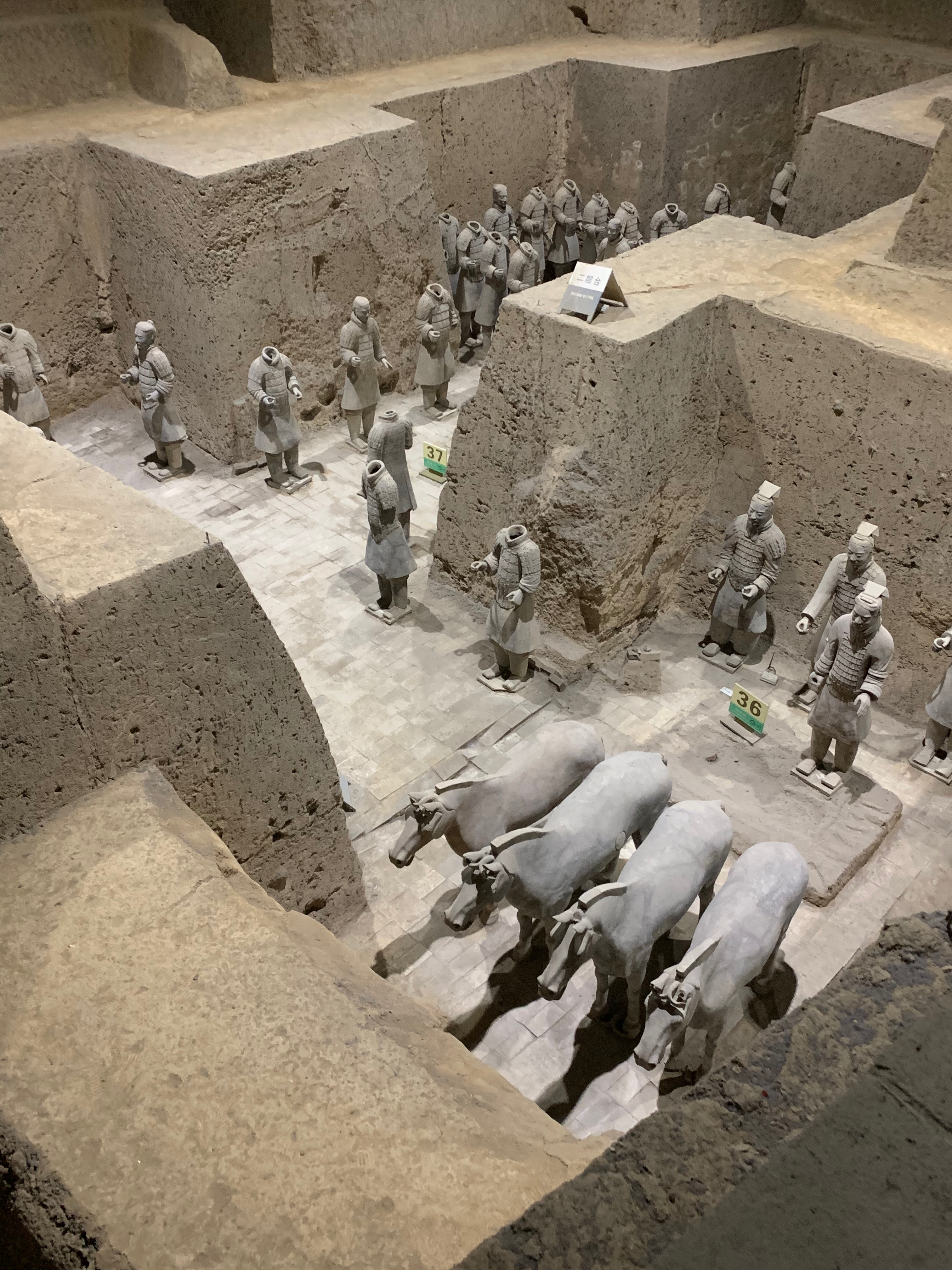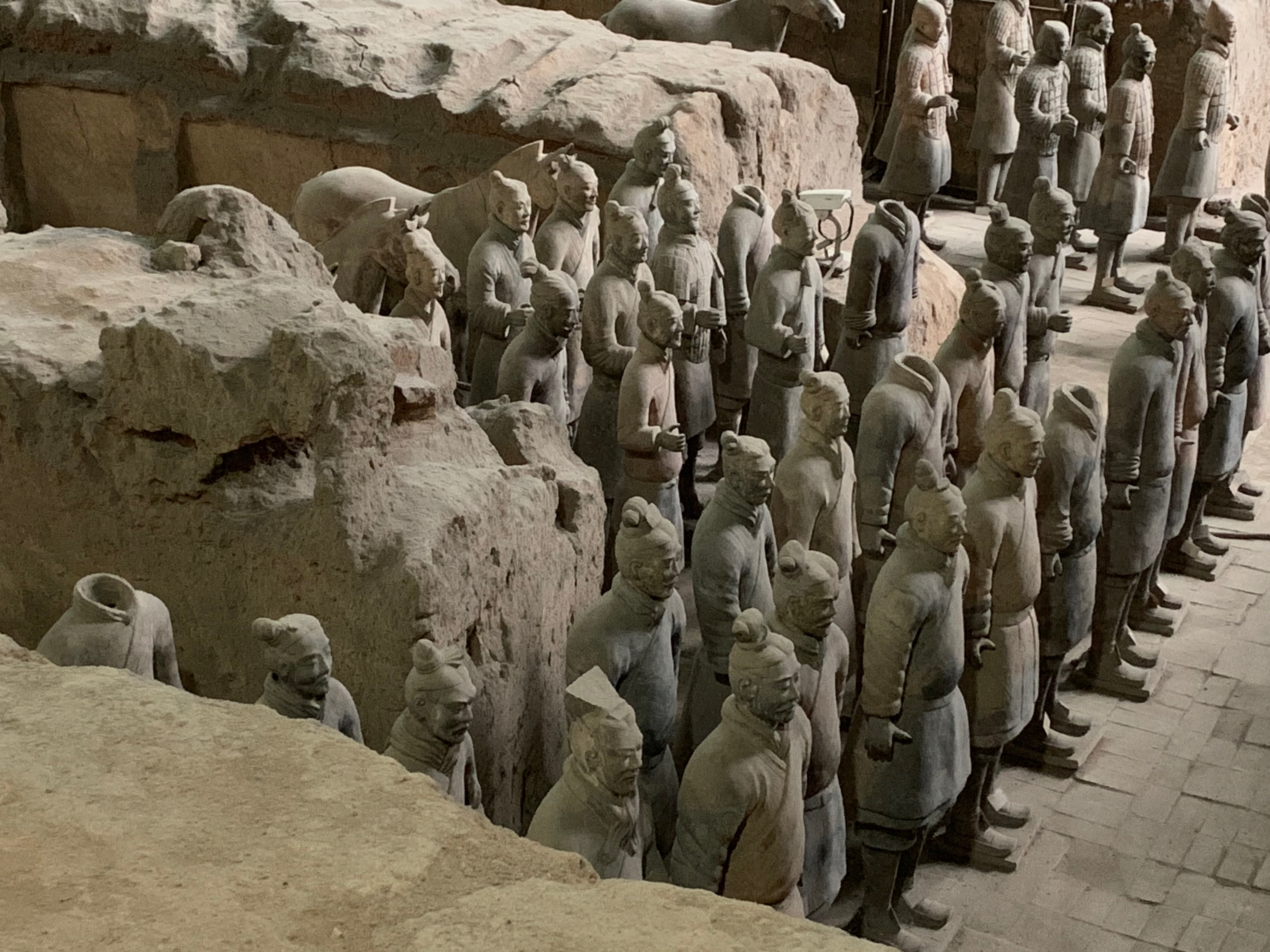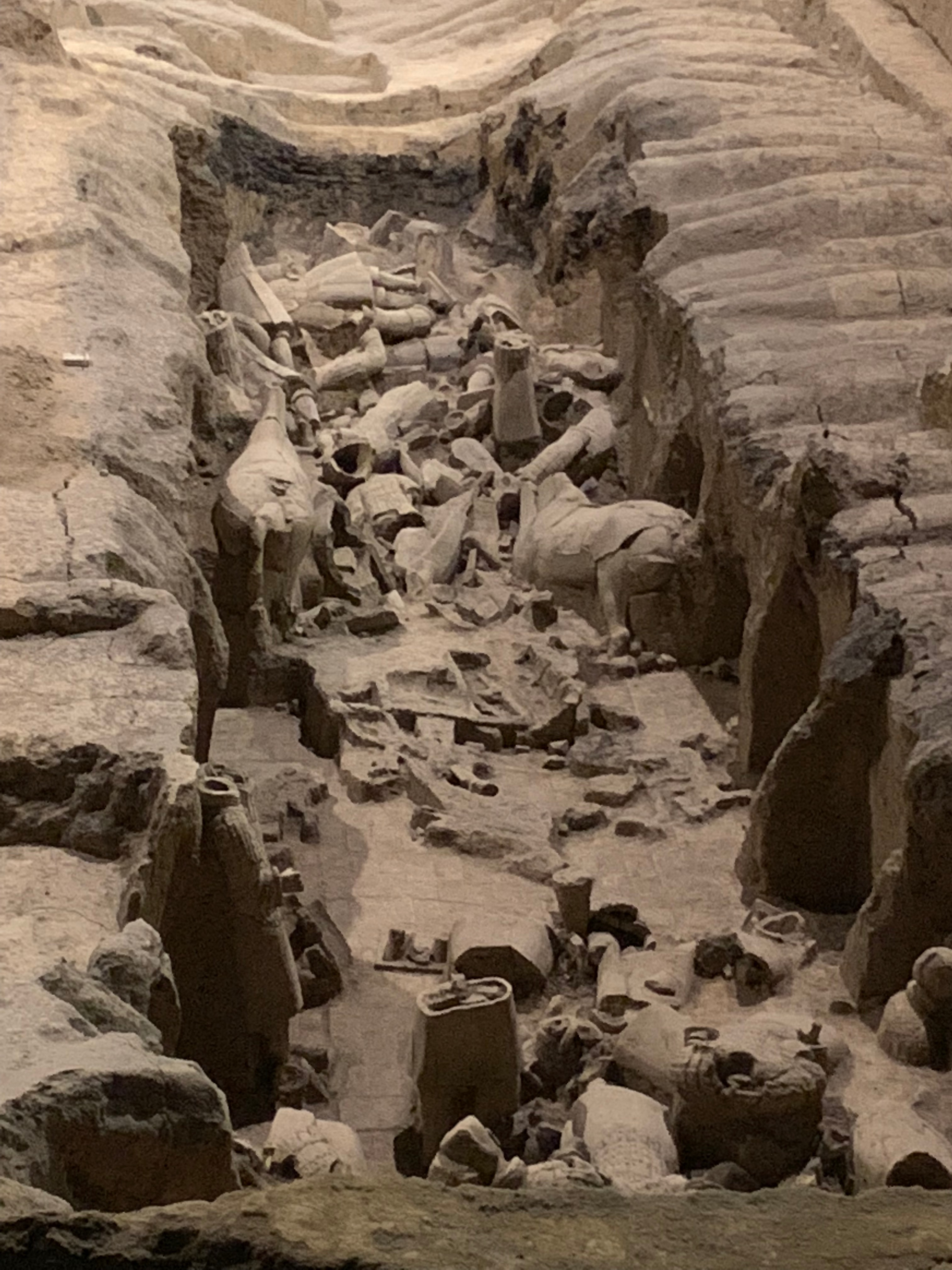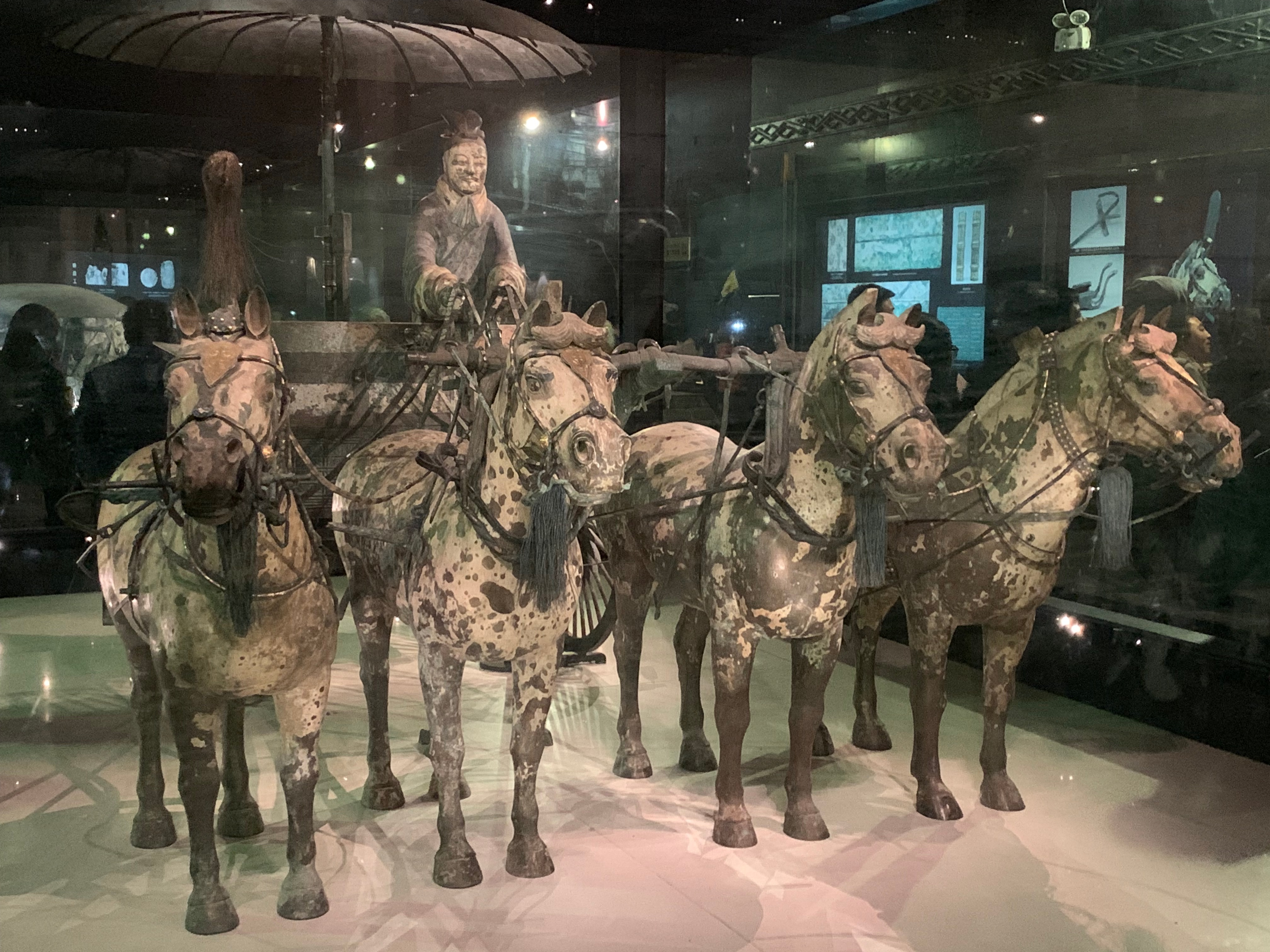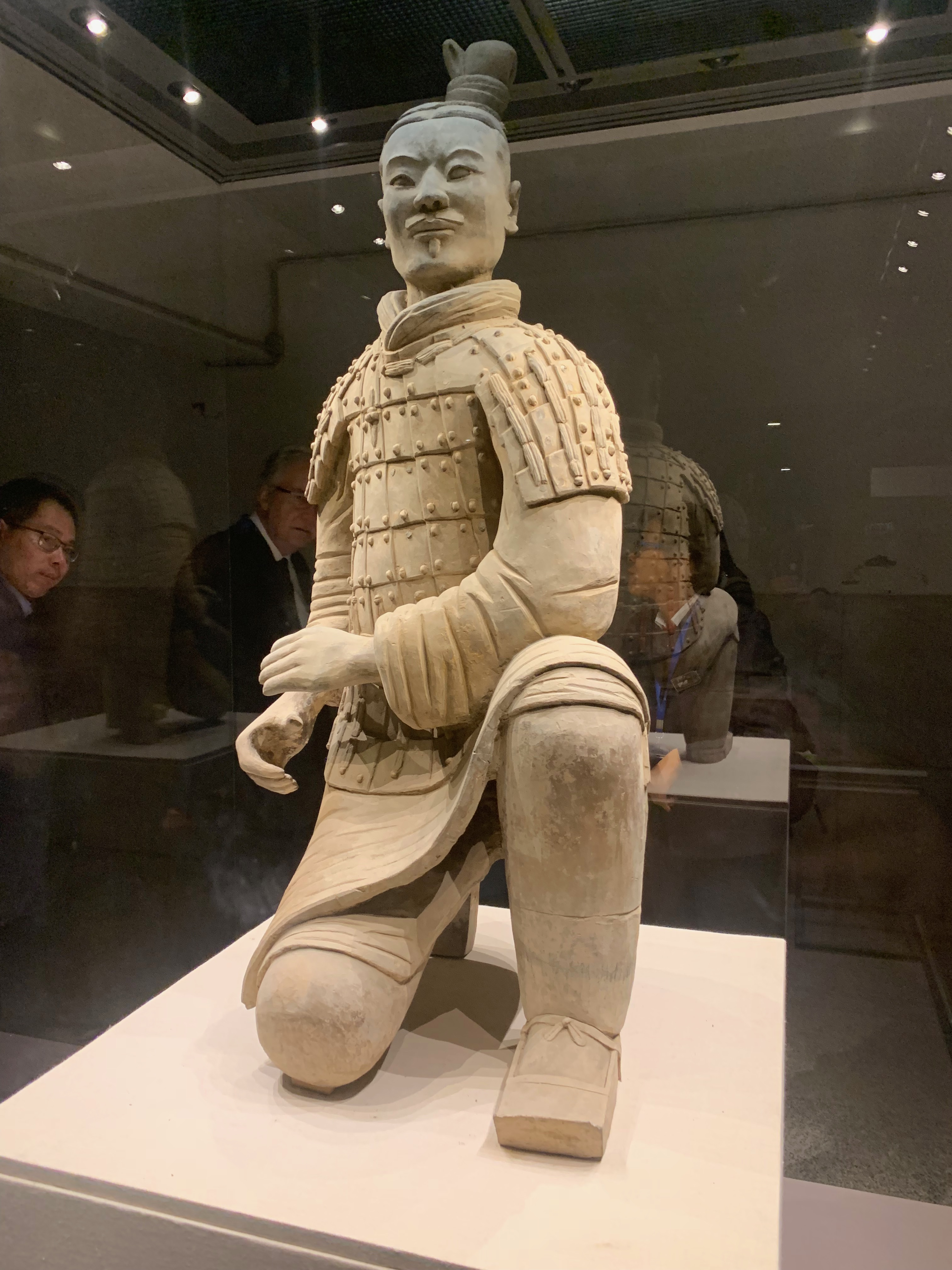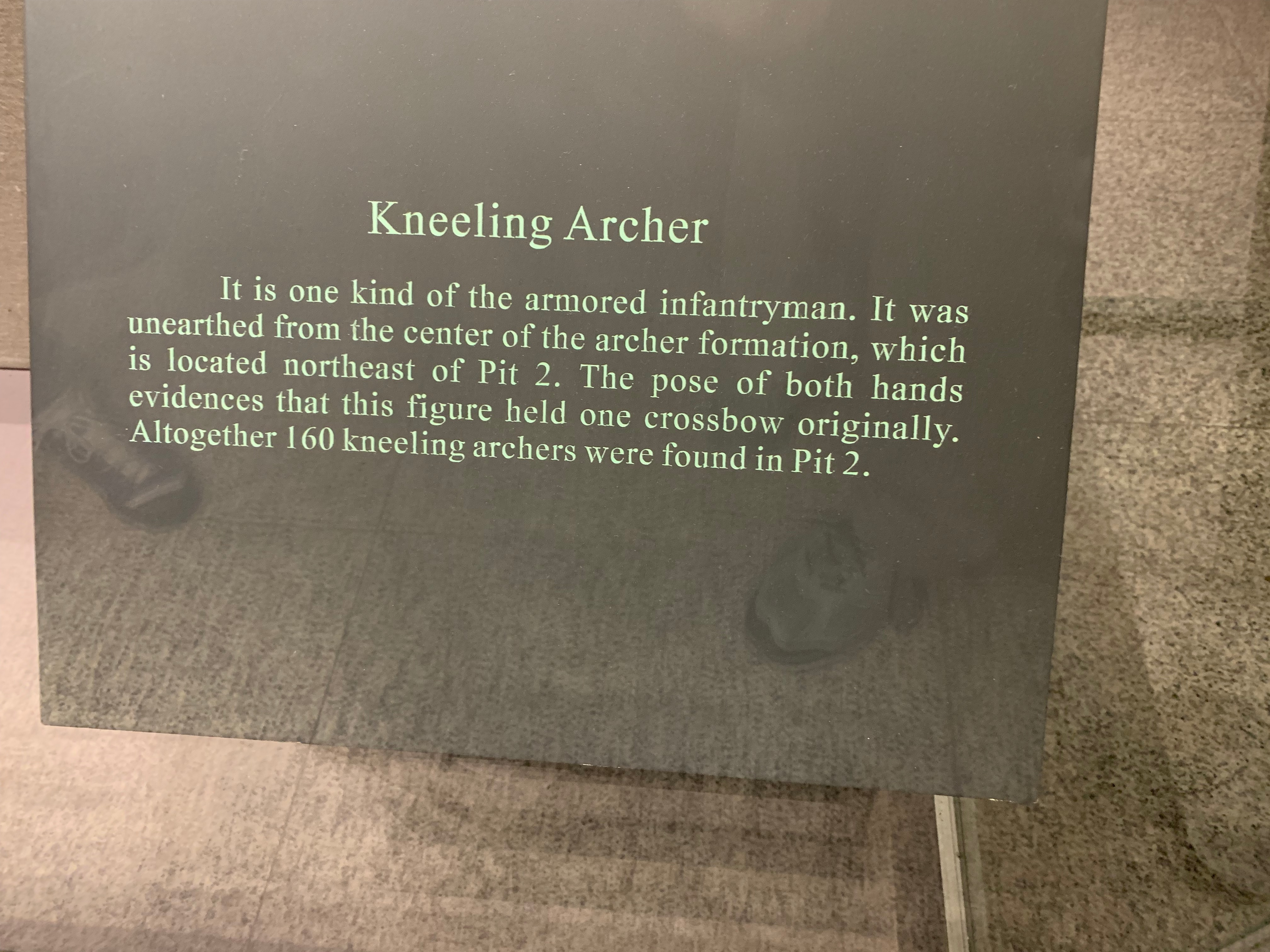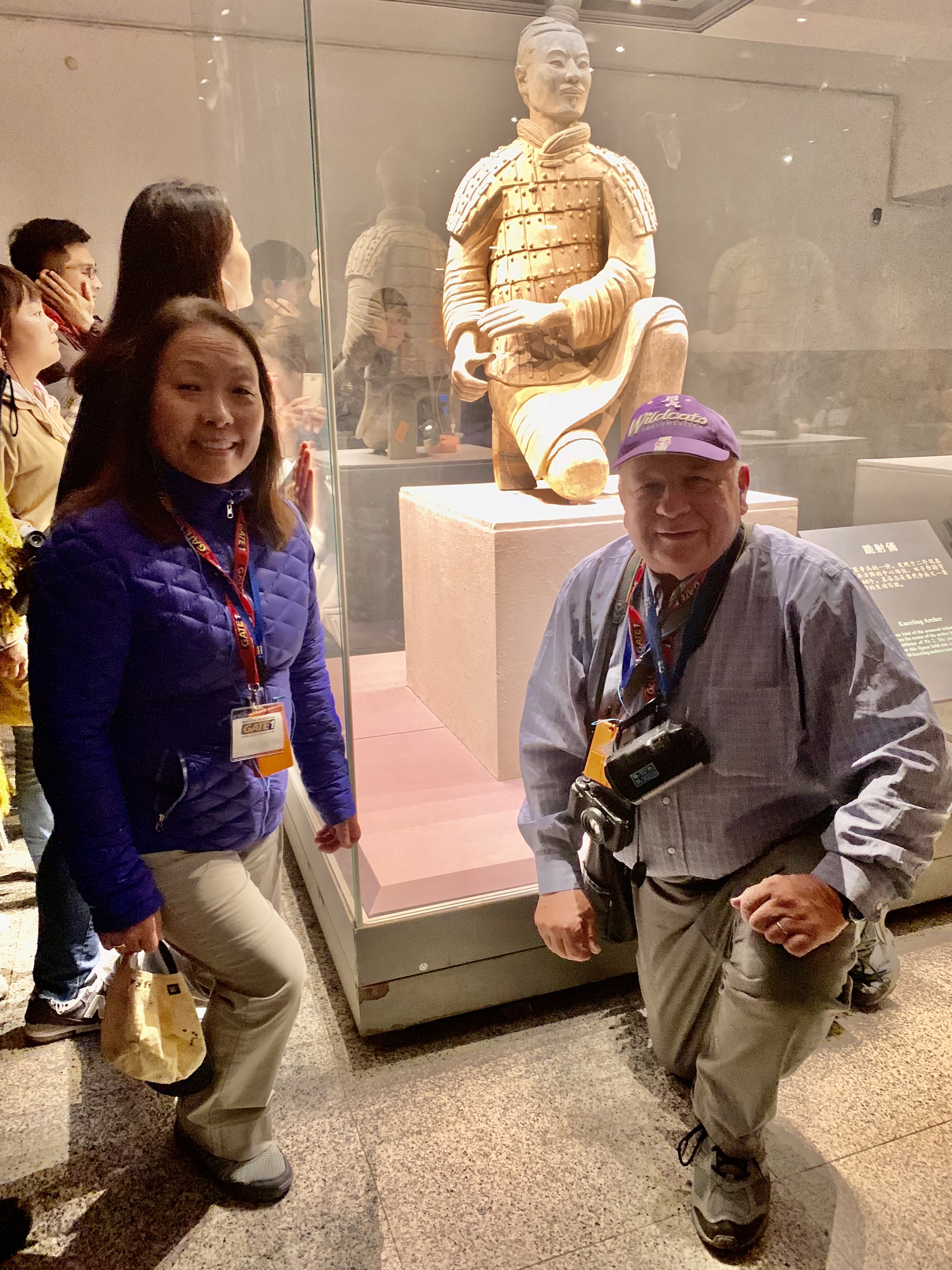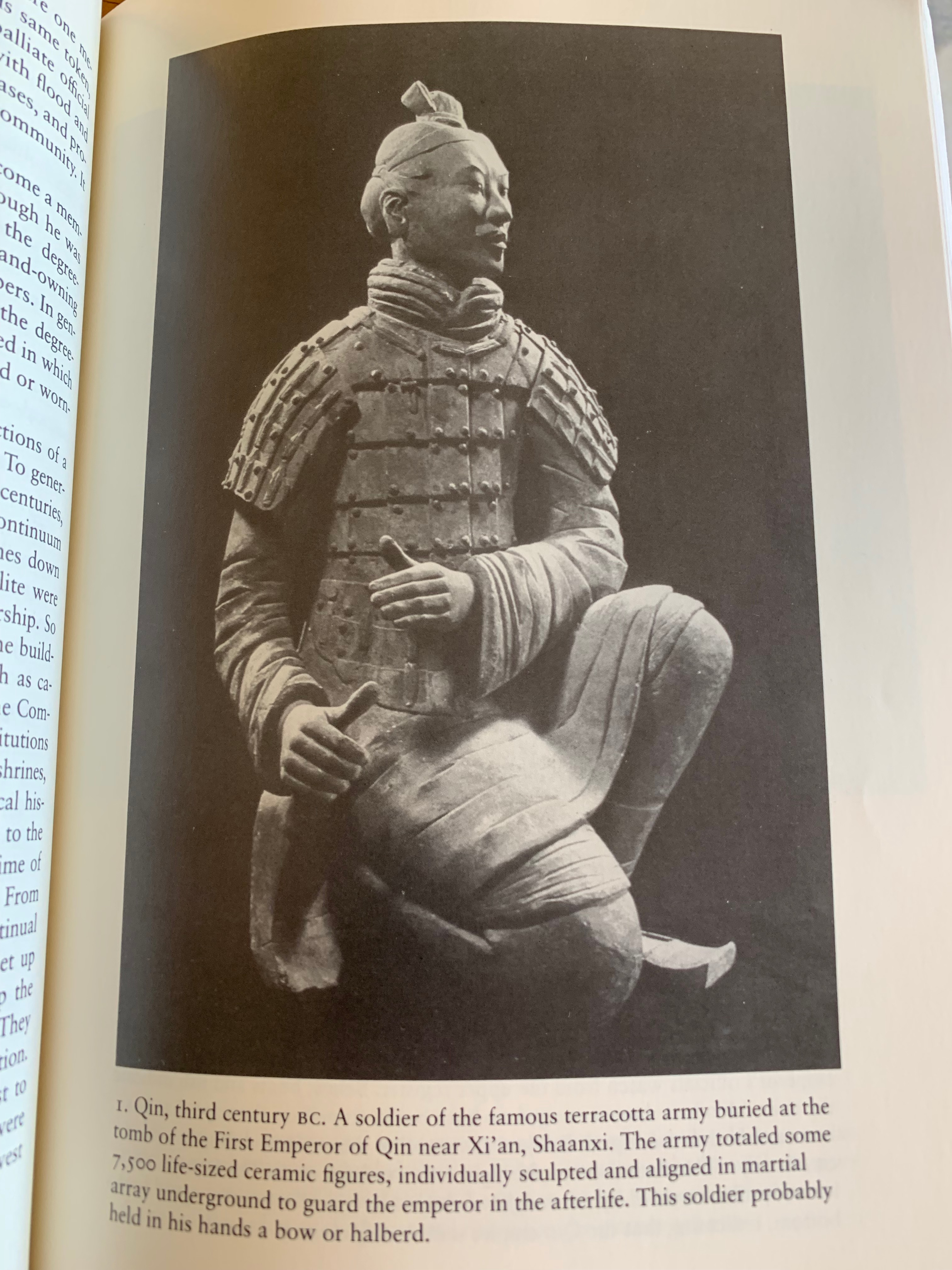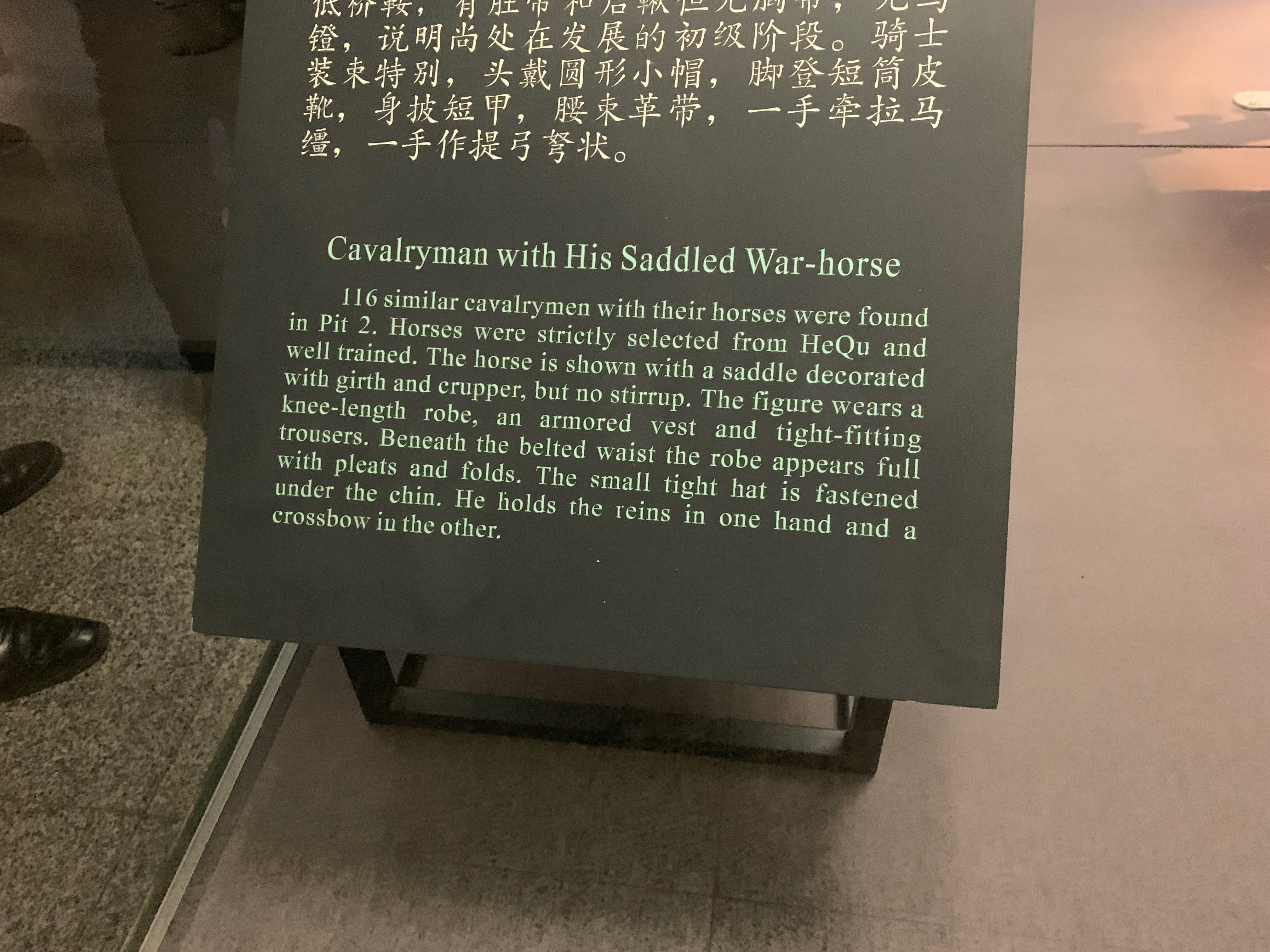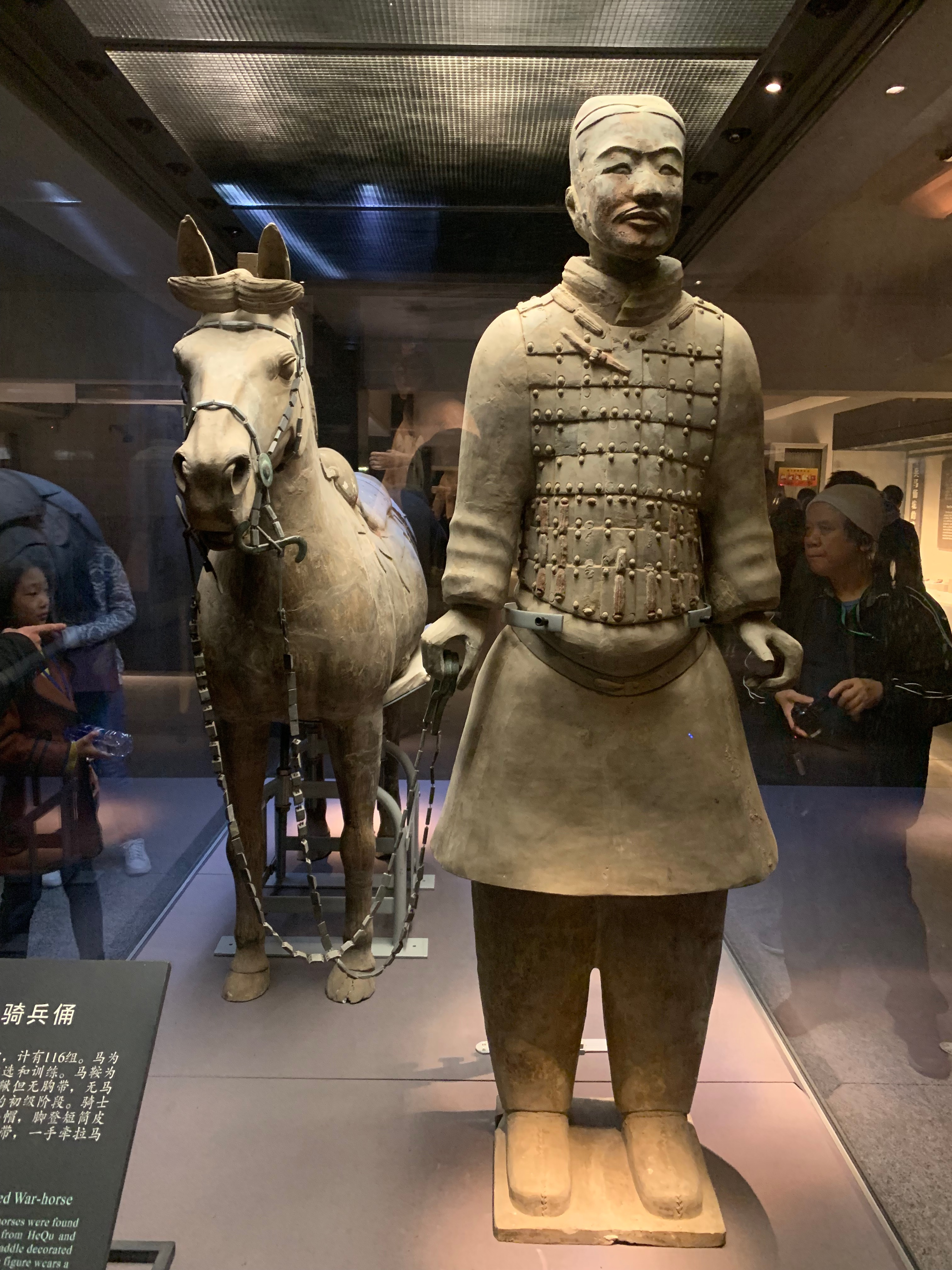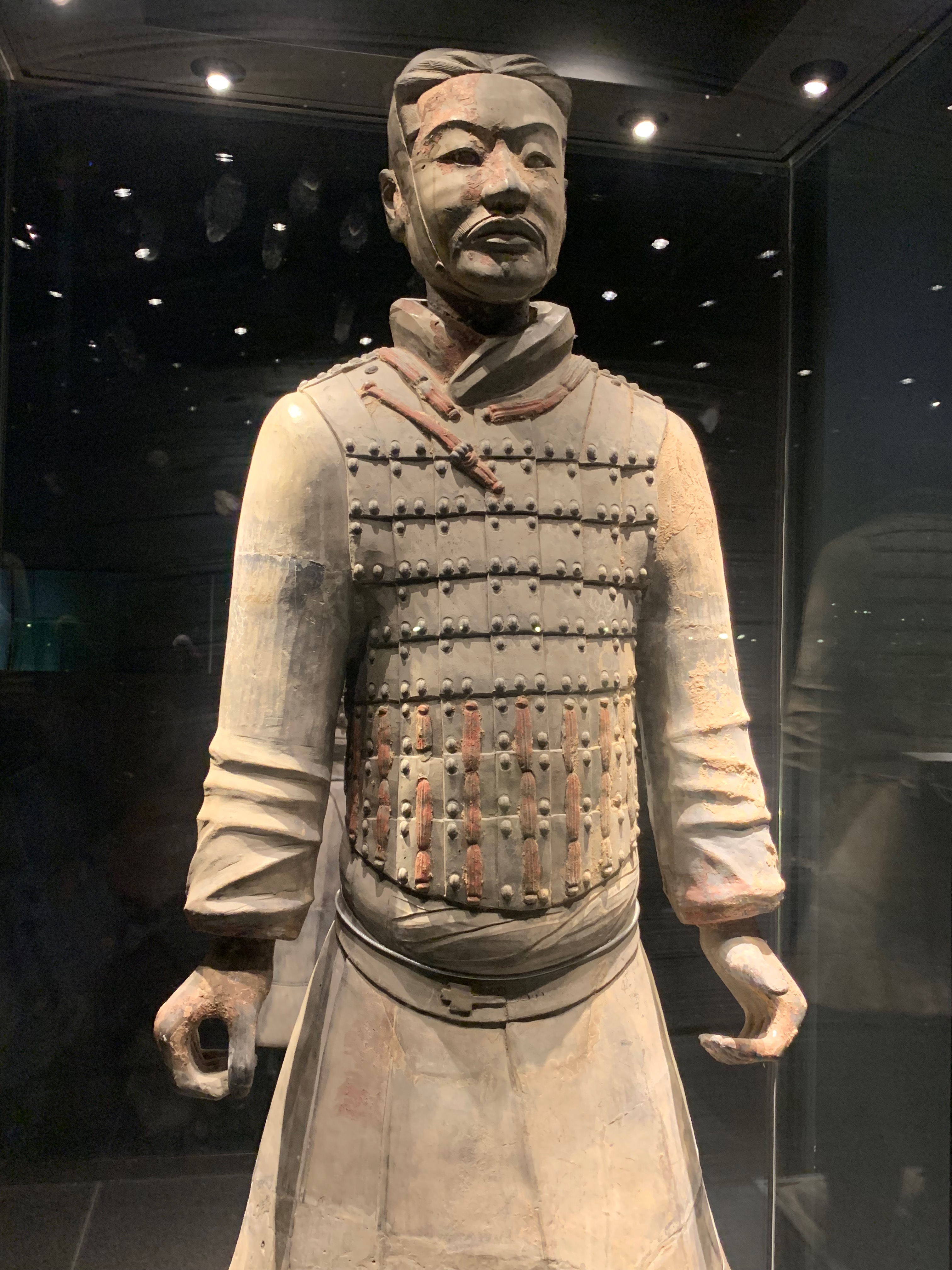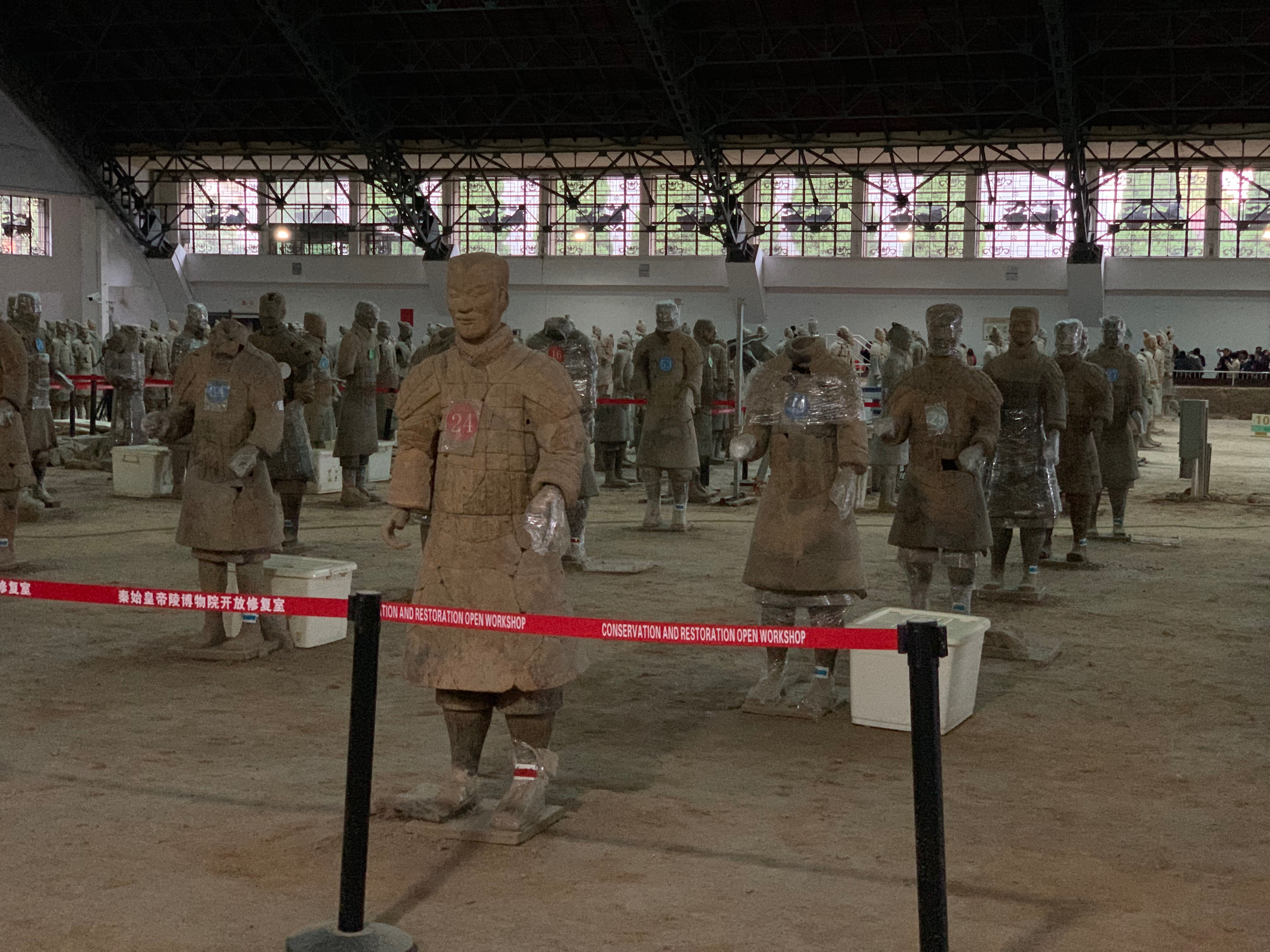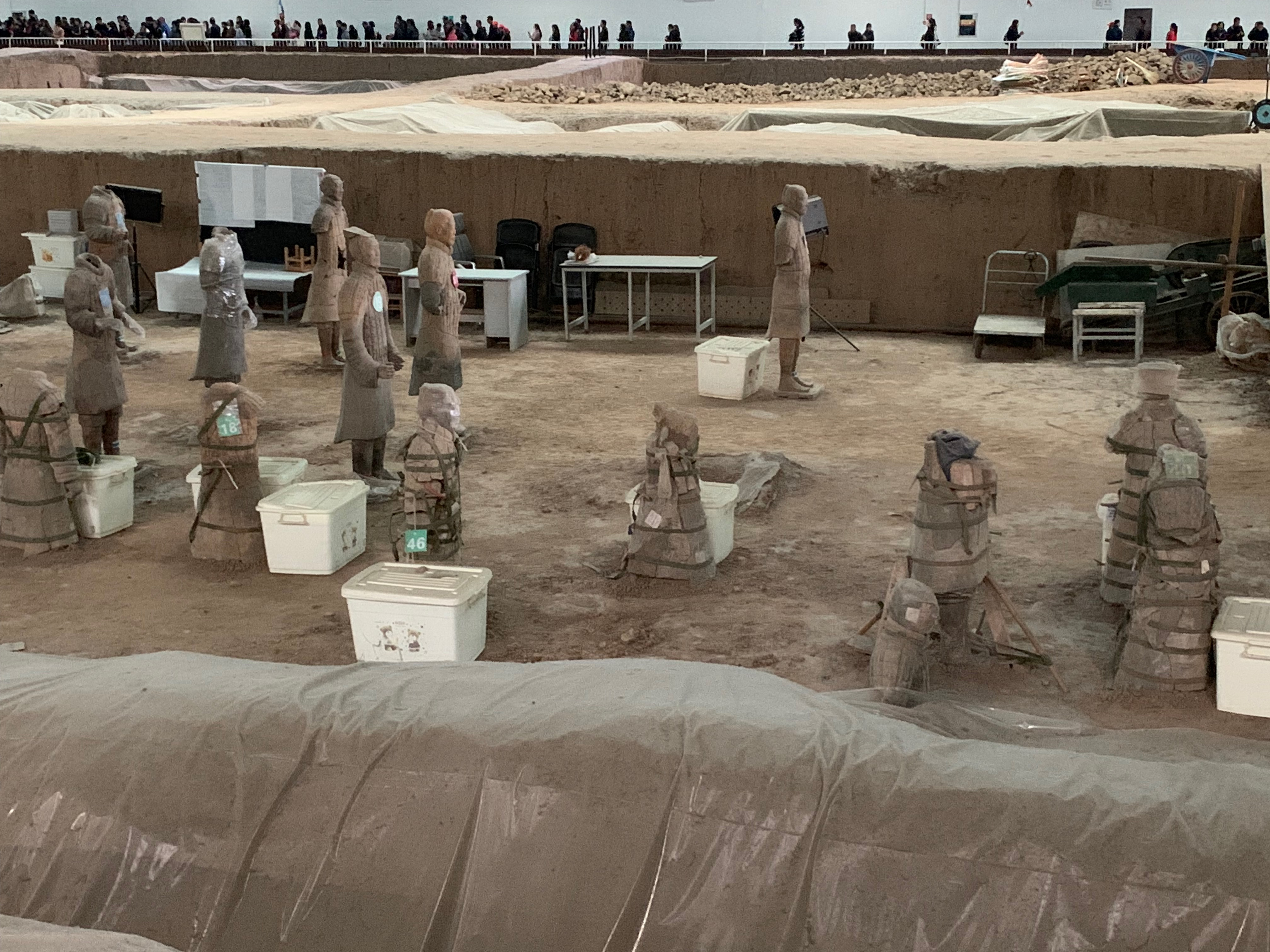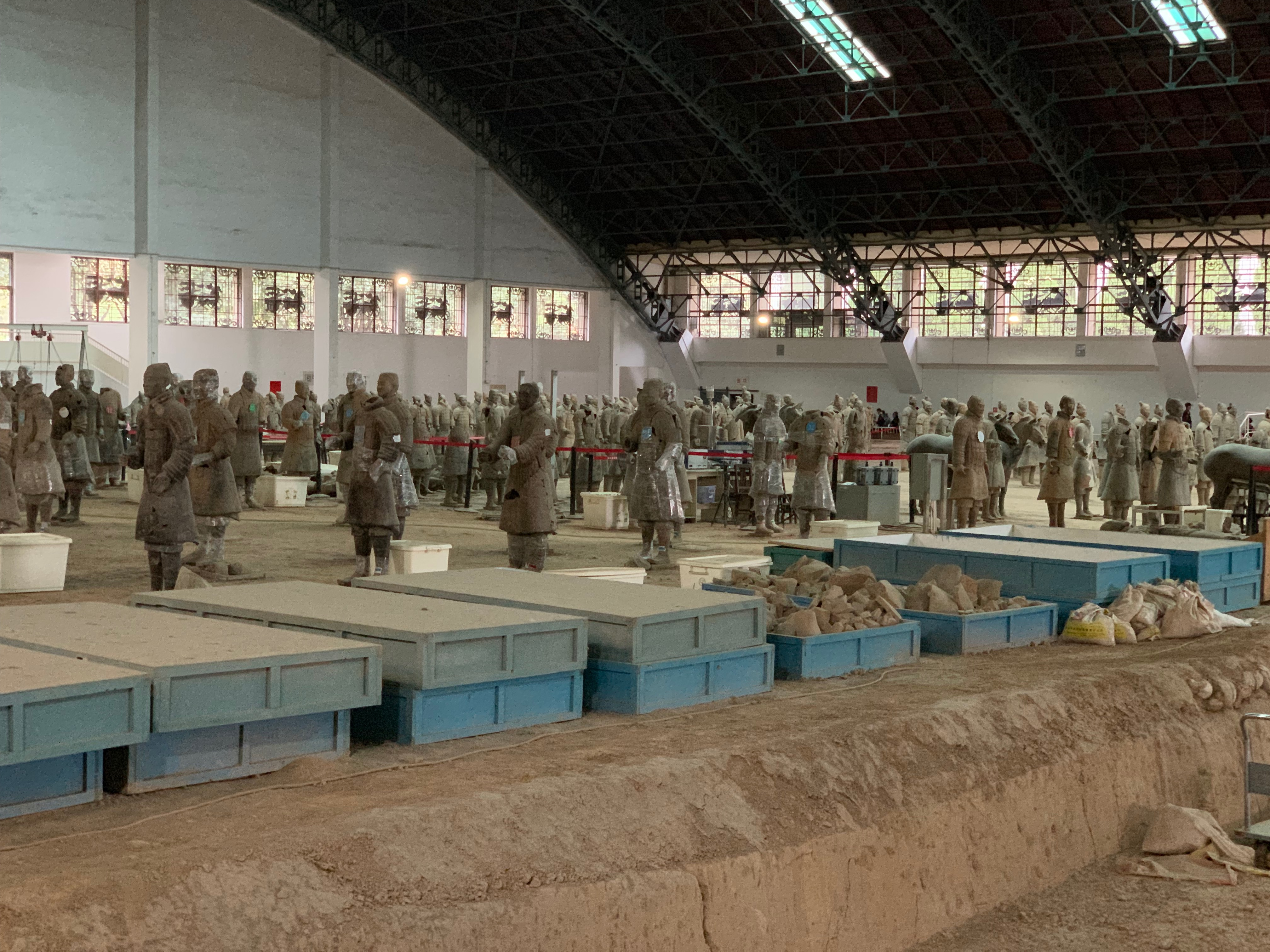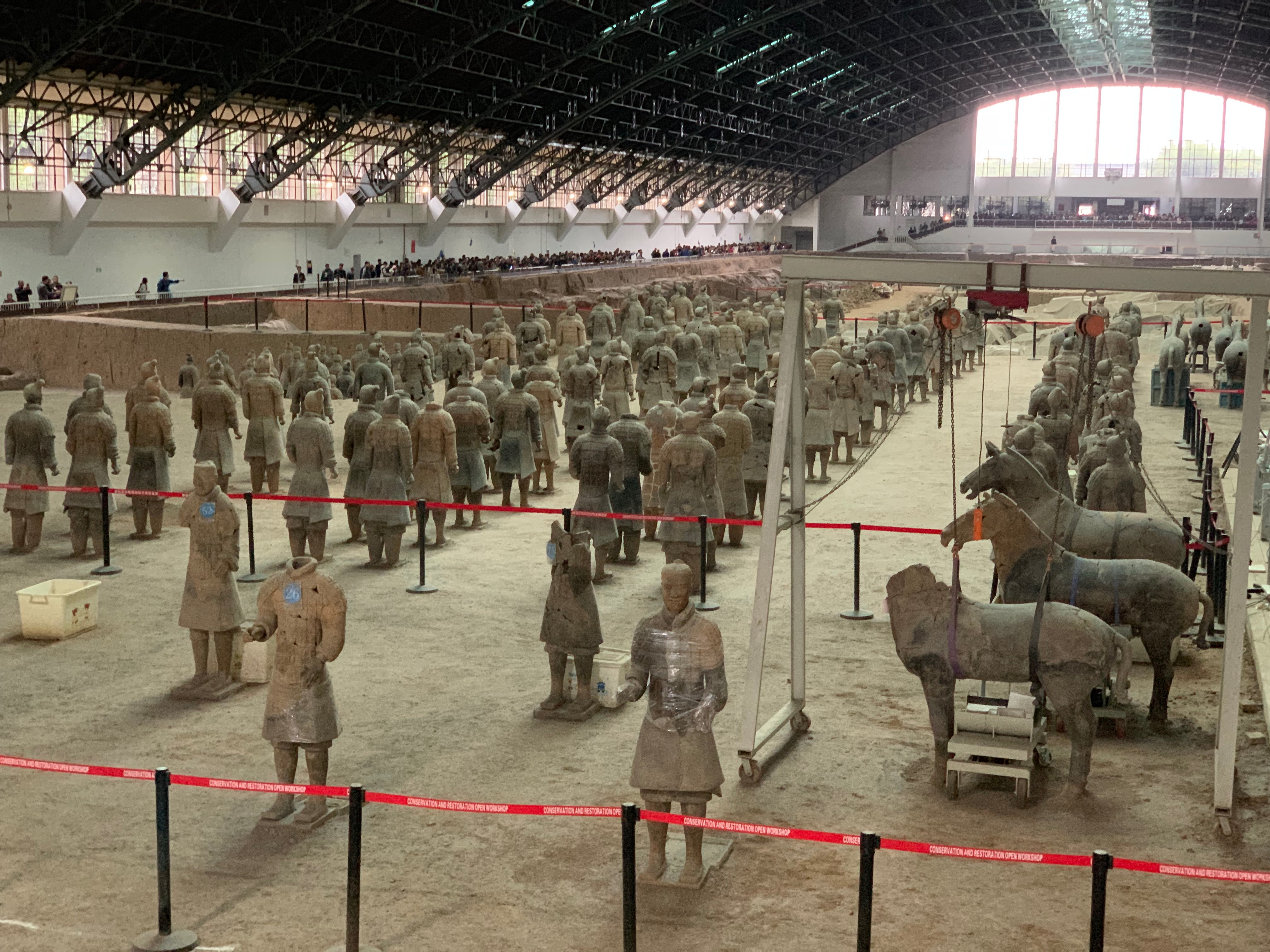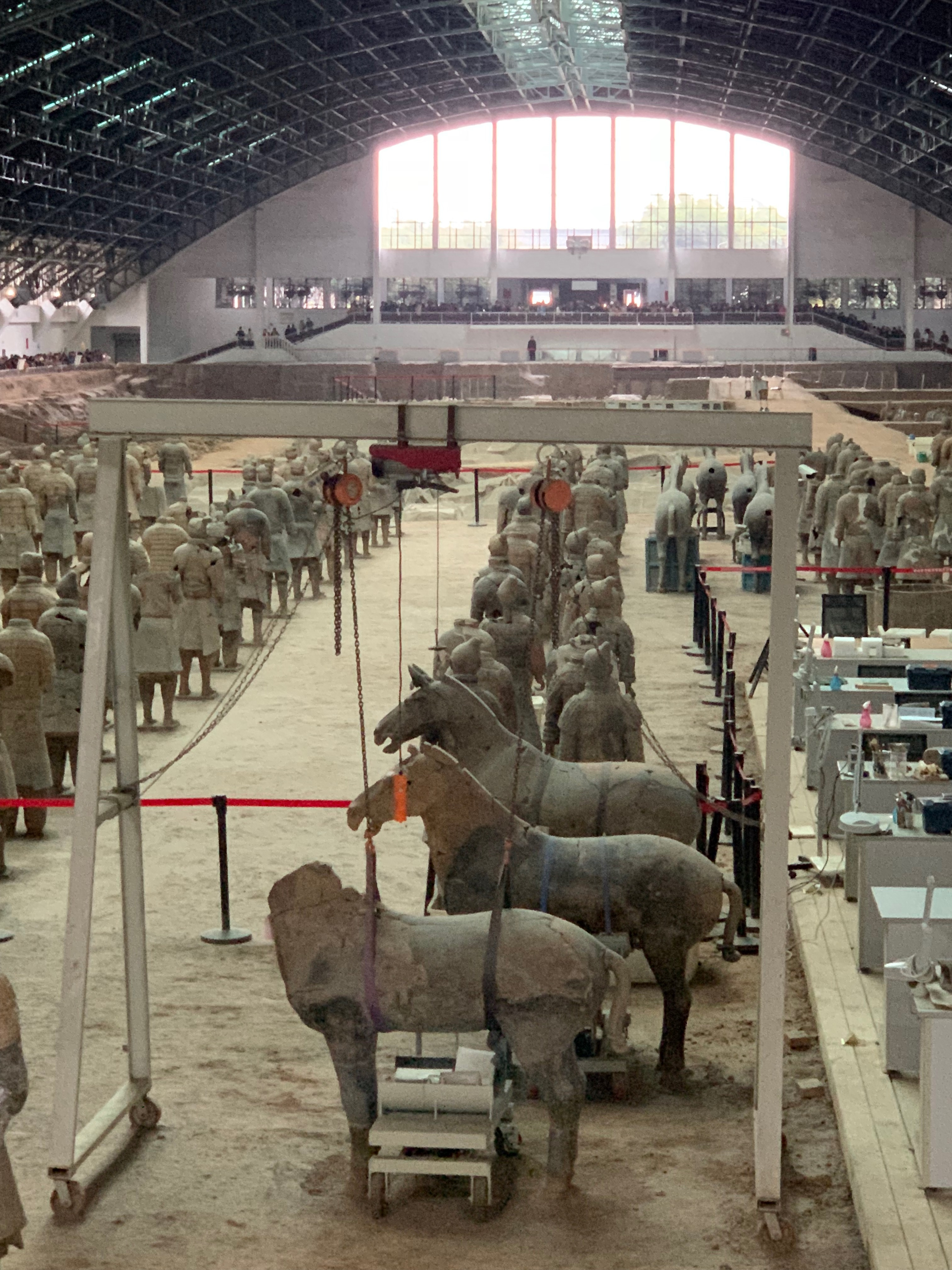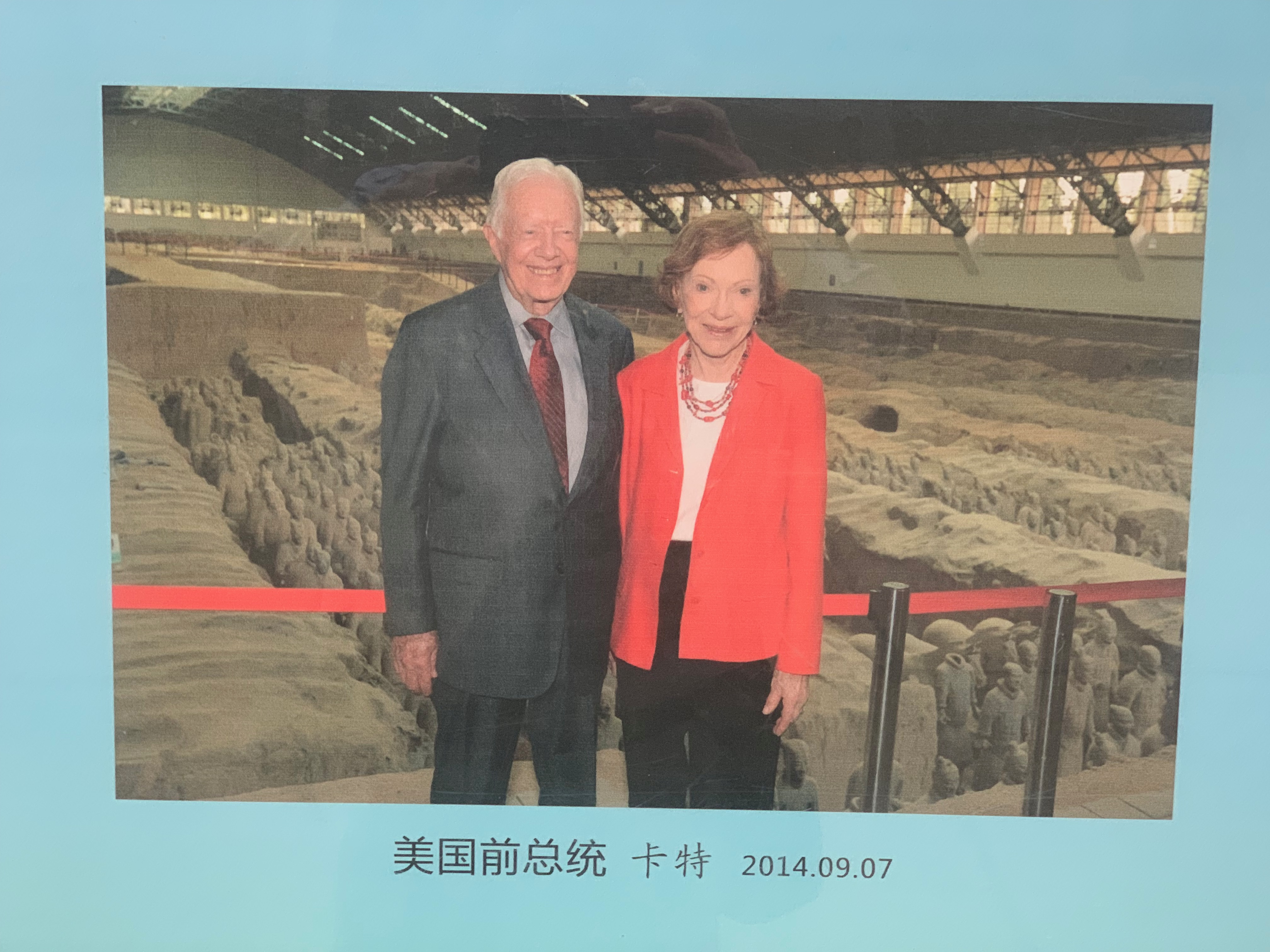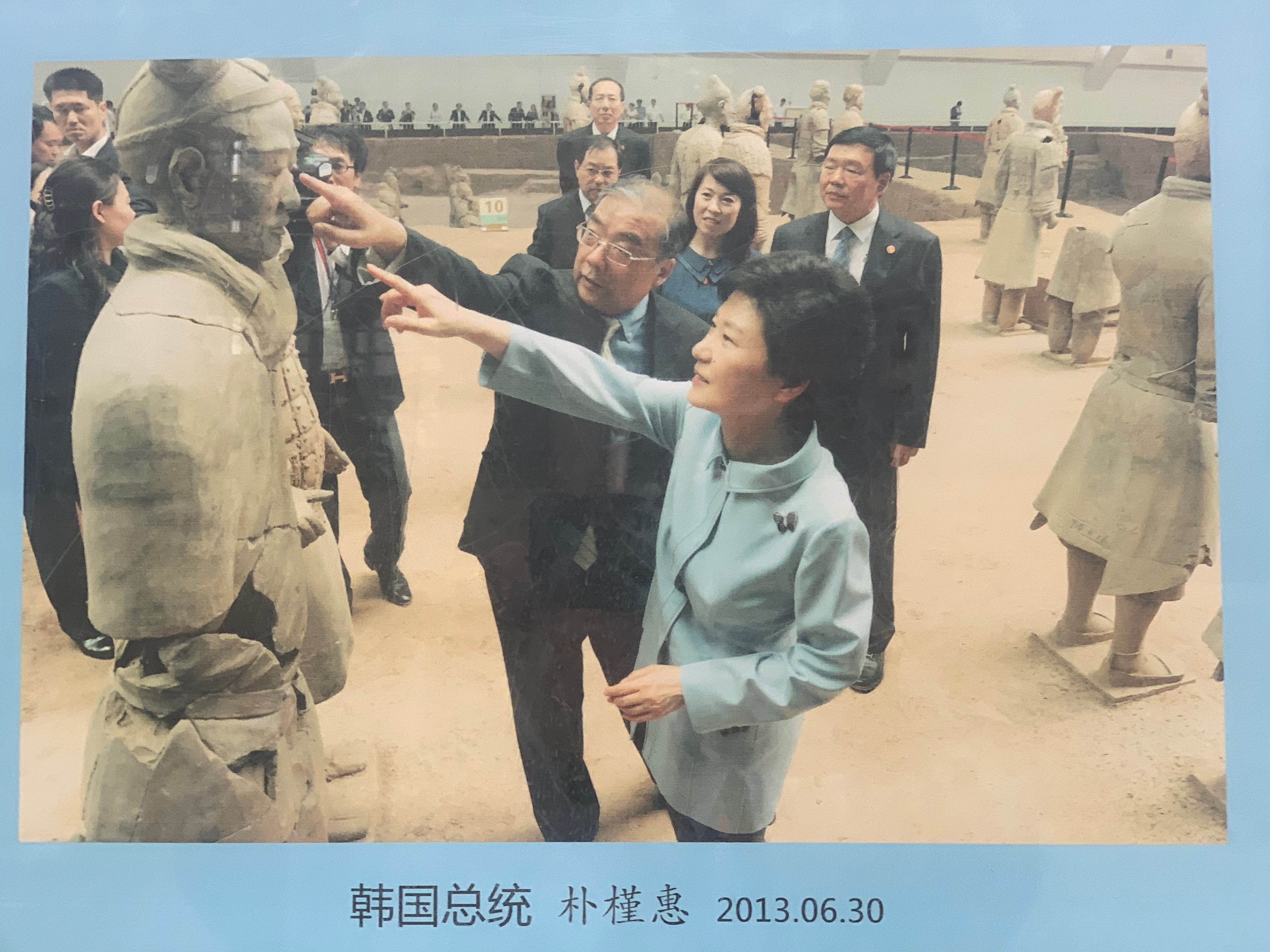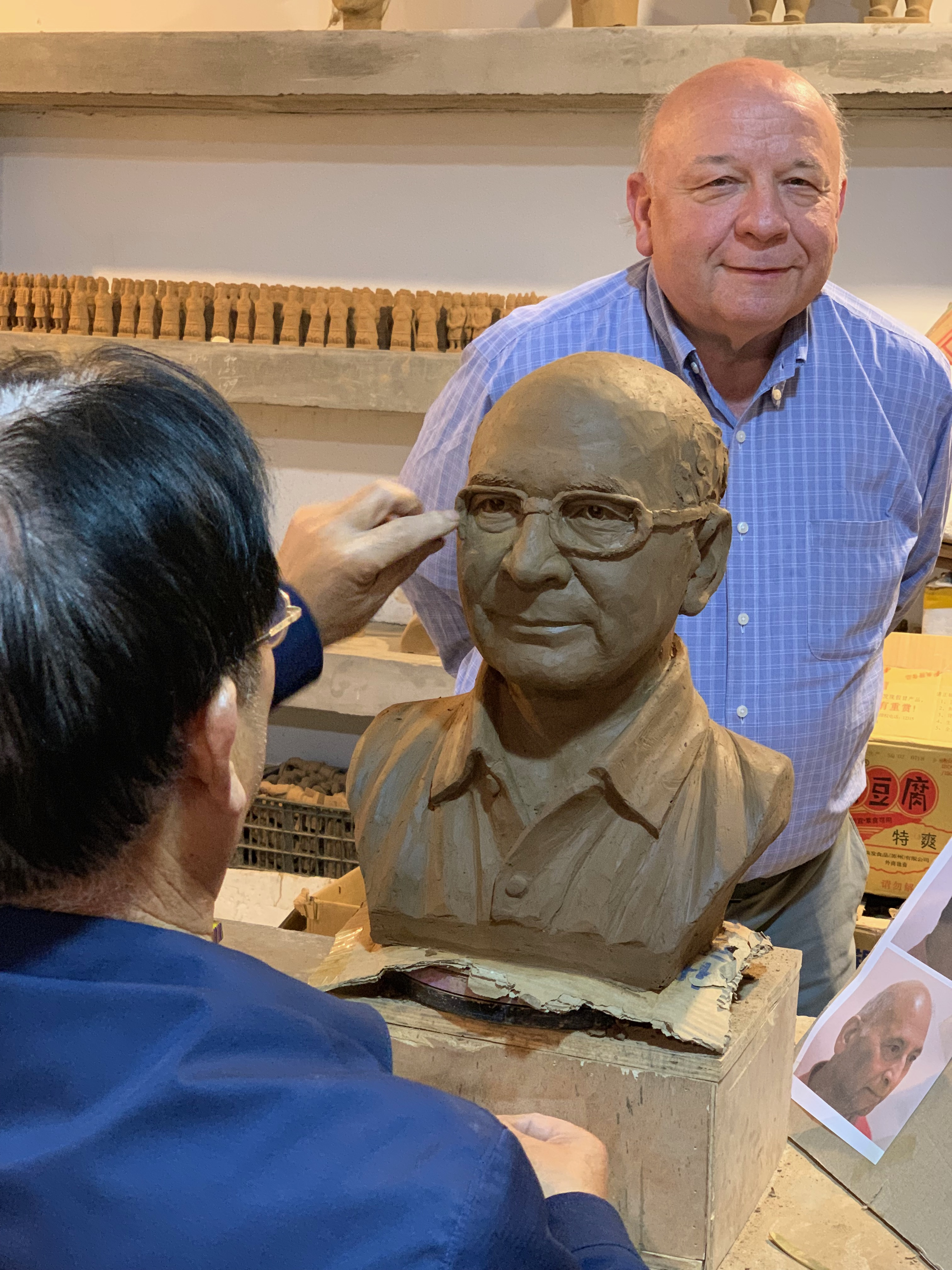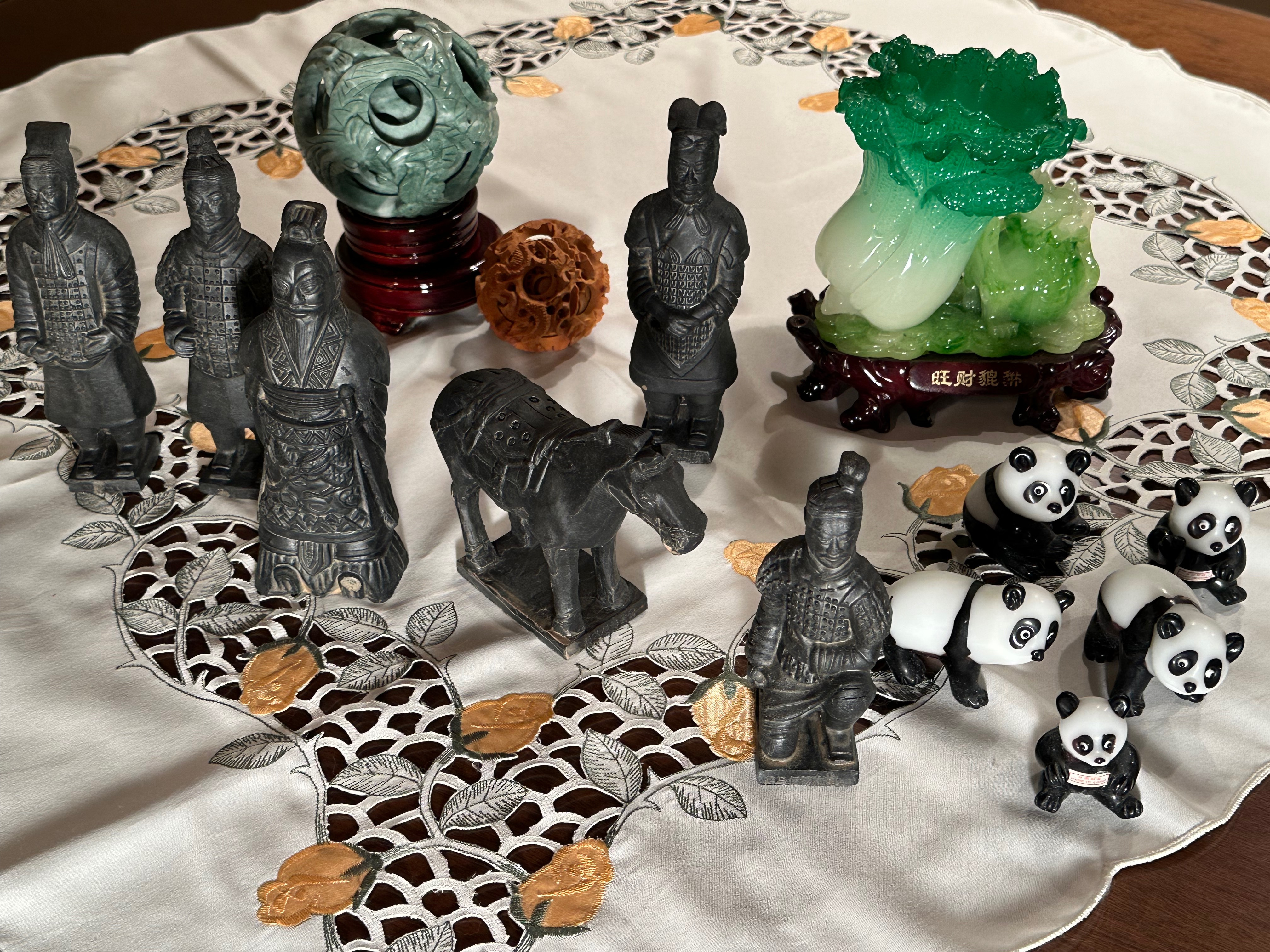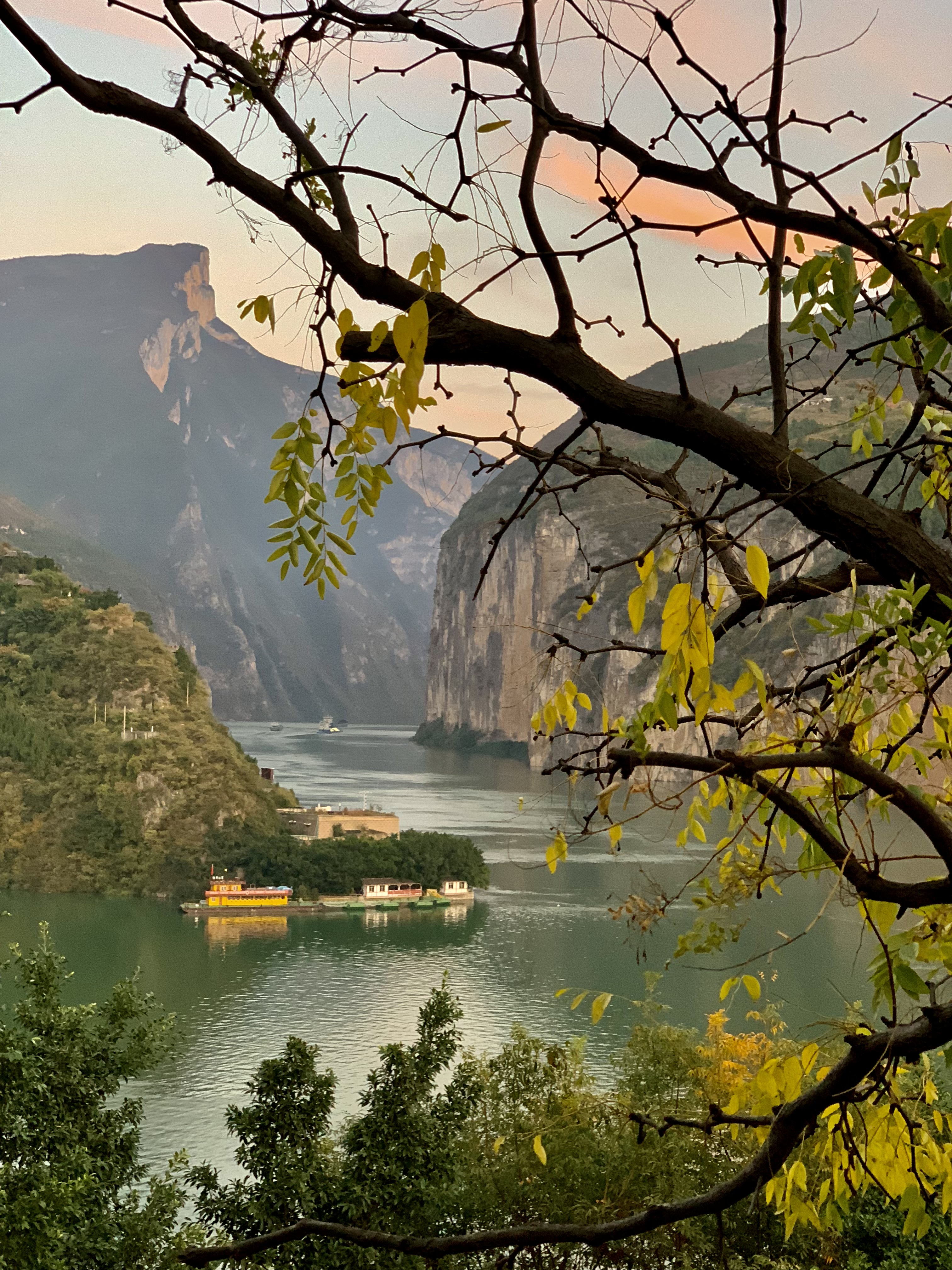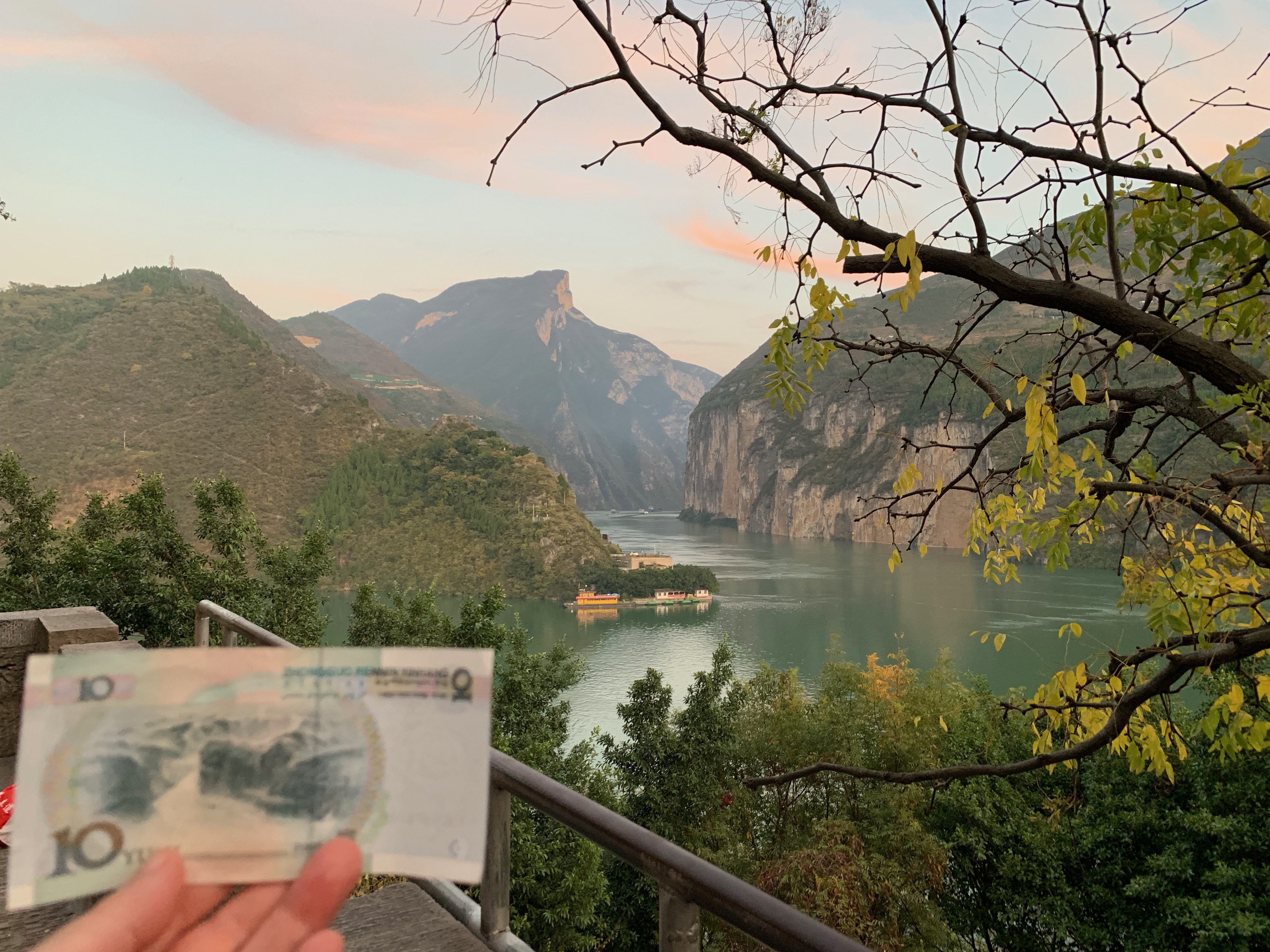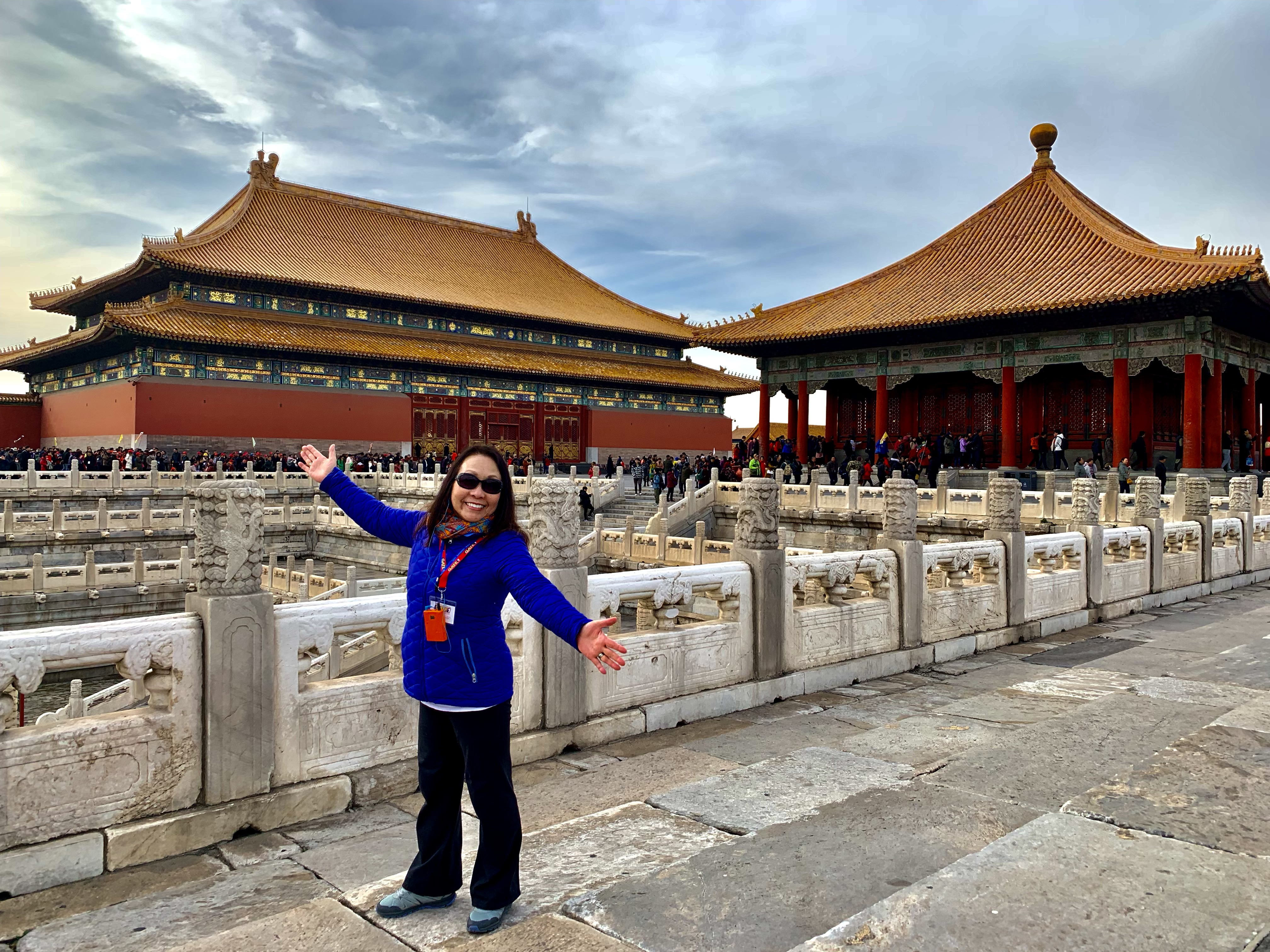In honor of this February 10, 2024 being the Chinese New Year, I have gone through photos I took in China during November of 2018. The selection below were taken on a November 4th visit to "Emperor Quinshihuang's Mausoleum Site Museum in Lintong, China" as per the photos' meta data. The rest of the world simply refers to this location as the army of Terracotta Warriors or Soldiers that accompanied China's first emperor, Emperor Qin, in death. It took 40 years during Qin's life to build the expansive mausoleum with its terra-cotta figures. He died at the age of 50 in 210 BC.
There are three main pits and the excavation continues to this day. The Emperor himself was placed in an above ground building with all the furnishings of a palace in which he could continue to live in death and apparently it remains buried in a huge mound that has yet to be fully excavated. Reportedly there exist booby traps to deter entry.
While Emperor Qin was China's first emperor (having conquered and combined warring factions) there were rulers before him who also surrounded themselves with an "army" to protect them in the after life. In some instances, those buried with the prior rulers were not made of terra-cotta, but rather the persons themselves. Qin himself was accompanied in death by thousands of officials and construction workers who were buried alive primarily to keep the location a secret.
In 1974 the site was discovered by farmers digging a well.
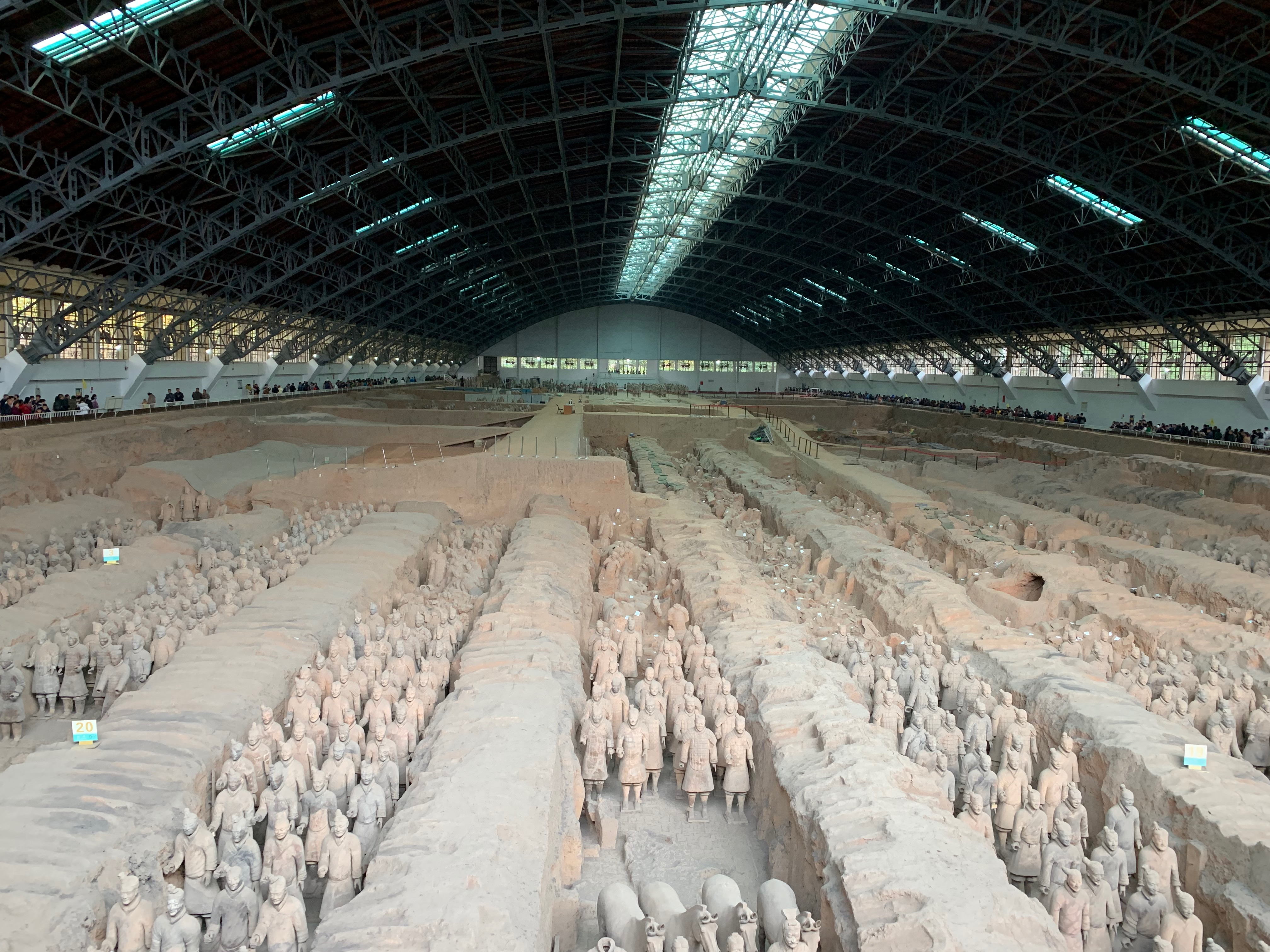
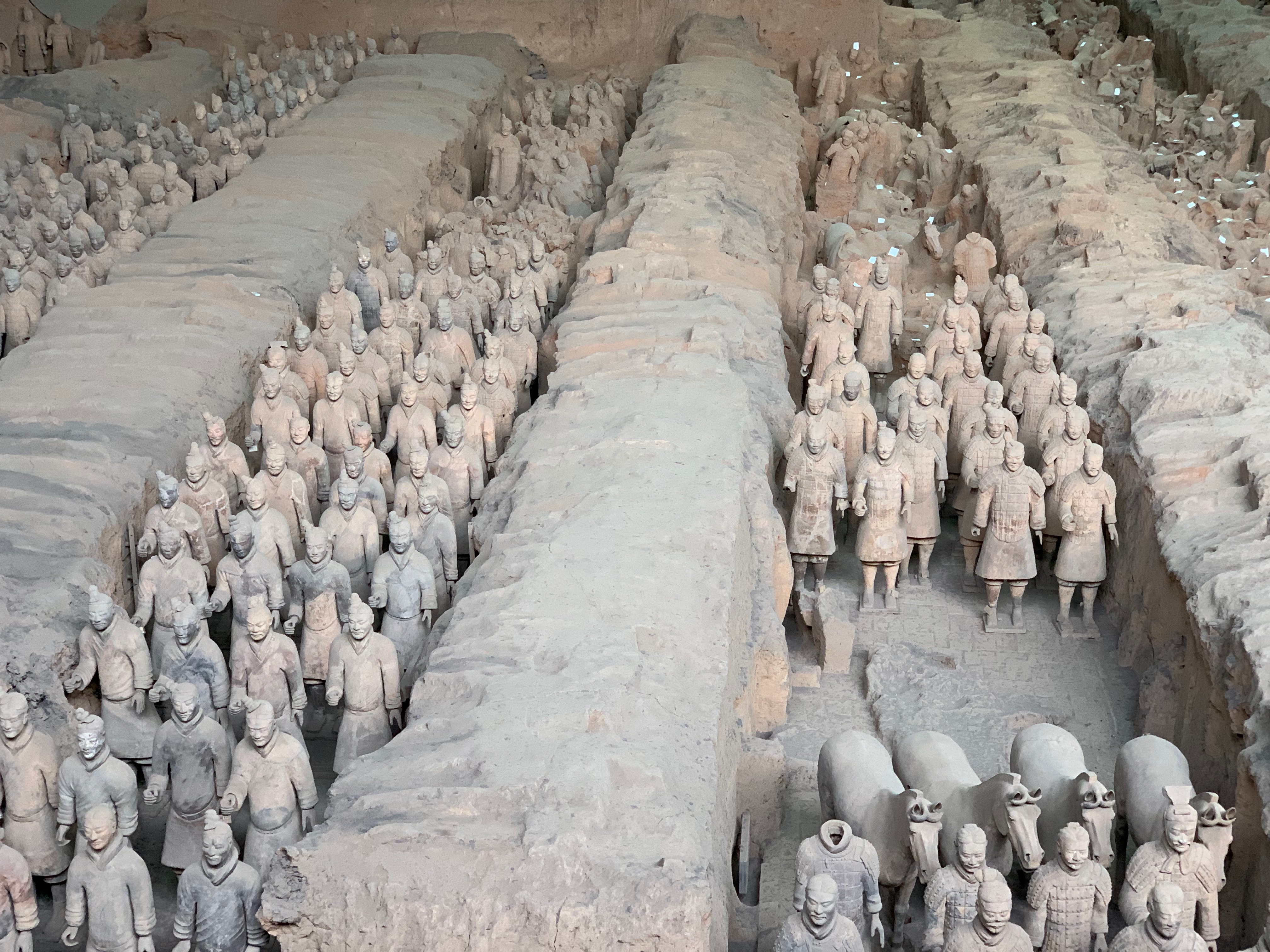
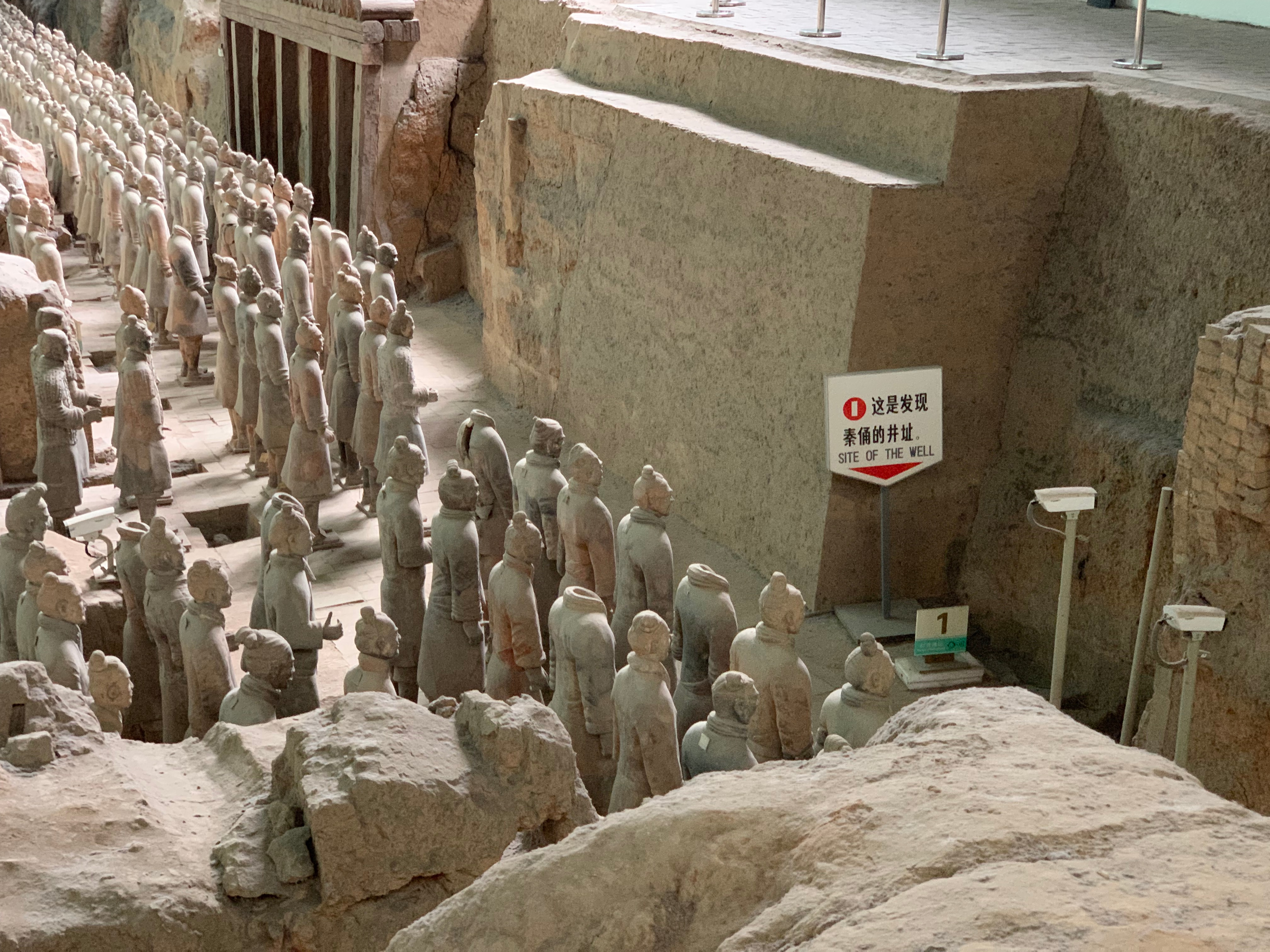
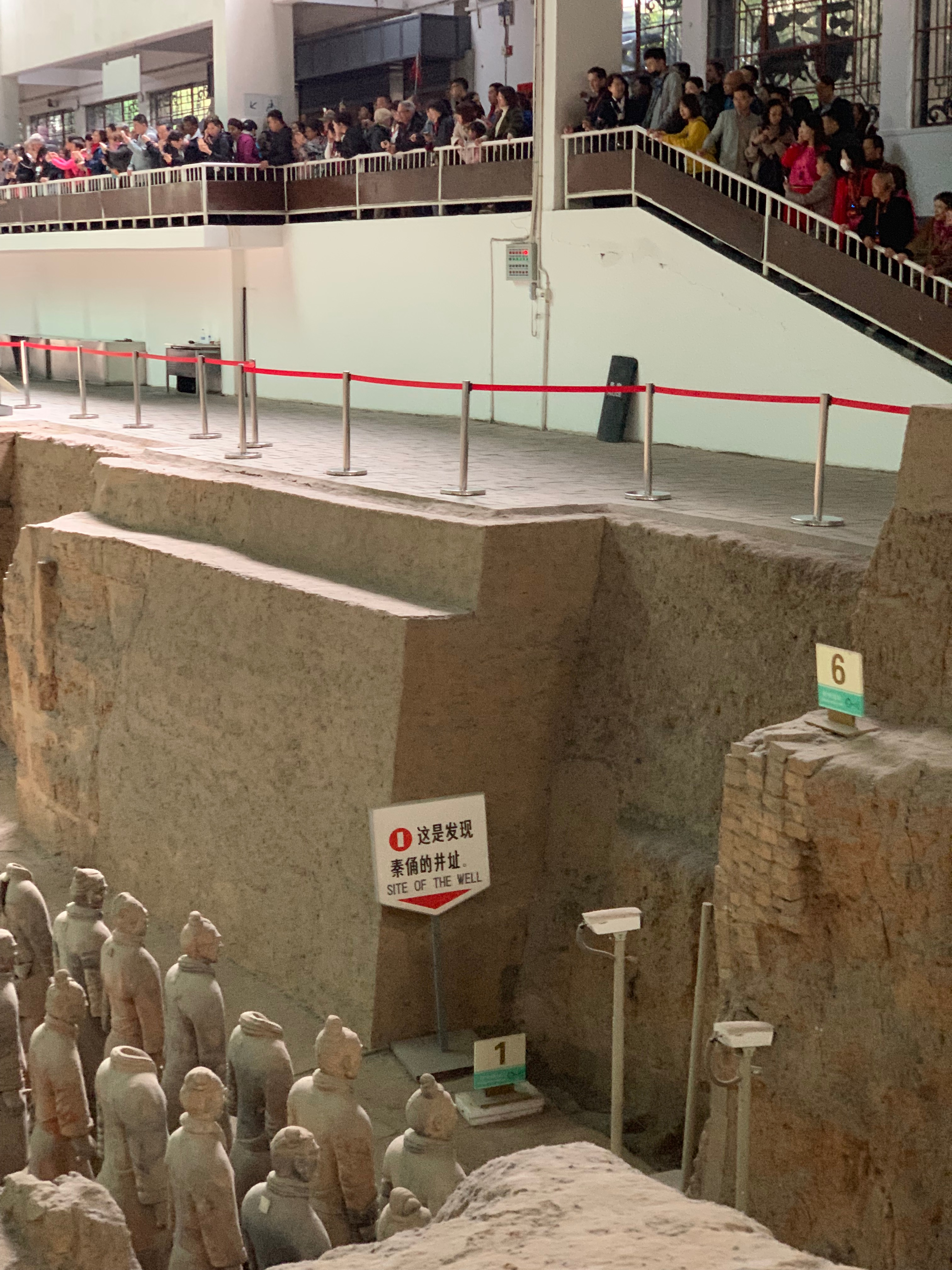
There are three main pits and the excavation continues to this day. The Emperor himself was placed in an above ground building with all the furnishings of a palace in which he could continue to live in death and apparently it remains buried in a huge mound that has yet to be fully excavated. Reportedly there exist booby traps to deter entry.
While Emperor Qin was China's first emperor (having conquered and combined warring factions) there were rulers before him who also surrounded themselves with an "army" to protect them in the after life. In some instances, those buried with the prior rulers were not made of terra-cotta, but rather the persons themselves. Qin himself was accompanied in death by thousands of officials and construction workers who were buried alive primarily to keep the location a secret.
In 1974 the site was discovered by farmers digging a well.






